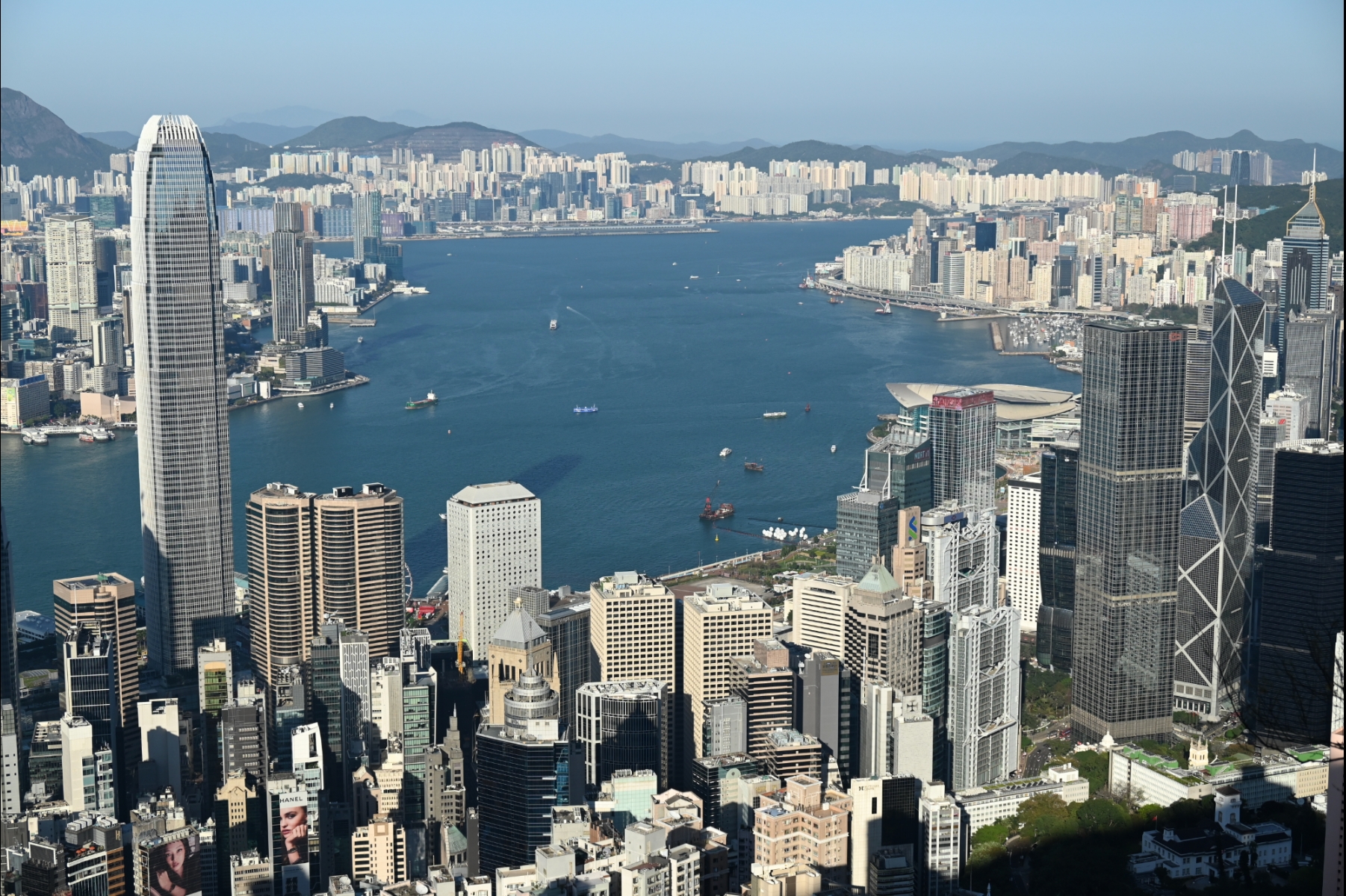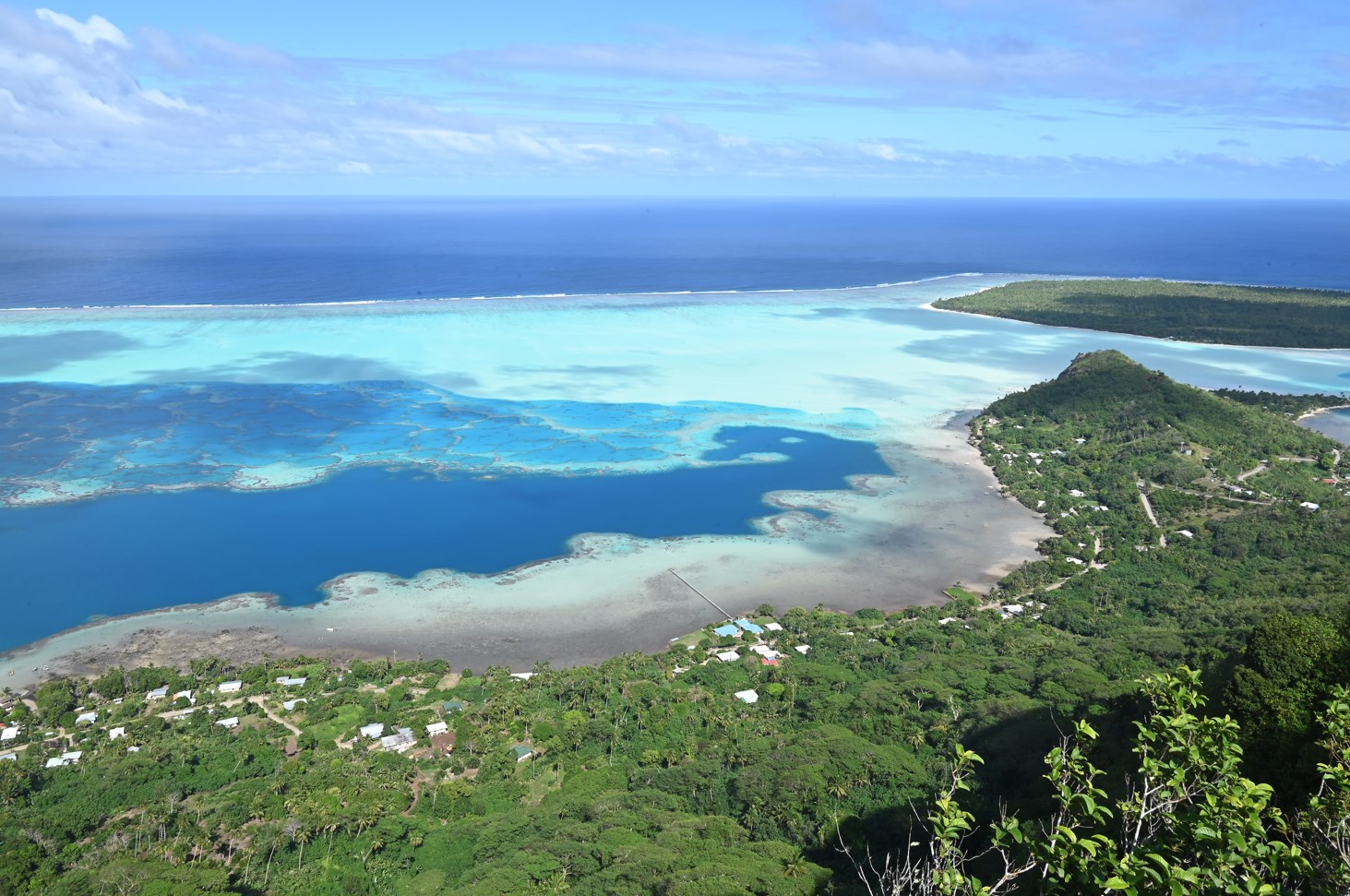The Hairy giraffe… IN MYANMAR
How long? We went to Myanmar for 2 weeks.
When? At the end of December/beginning of January, which allowed us to avoid the monsoon season (June to October) and the intense heat (March to May). That said, be prepared for warmth, especially in the southern part of the country. The heat is amplified by humidity, particularly in Yangon.
Ease of independent travel: 2 giraffes ![]() The country’s political situation remains very fragile, leading to a significant portion of the territory being off-limits to tourists. Even in the most accessible areas, independent travel remains challenging. Tuk-tuks, private drivers, renting a scooter (at your own risk… as per our mishaps with that), trains that are slow and offer discomfort… Traveling in Myanmar is not without its challenges.
The country’s political situation remains very fragile, leading to a significant portion of the territory being off-limits to tourists. Even in the most accessible areas, independent travel remains challenging. Tuk-tuks, private drivers, renting a scooter (at your own risk… as per our mishaps with that), trains that are slow and offer discomfort… Traveling in Myanmar is not without its challenges.
Costs: 3 giraffes ![]() The country remains relatively inexpensive, although the quality-price ratio isn’t always favorable.
The country remains relatively inexpensive, although the quality-price ratio isn’t always favorable.
Ease of communication: 2 giraffes ![]() Often, you’ll have to manage using hand gestures to make yourself understood.
Often, you’ll have to manage using hand gestures to make yourself understood.
Security: 3 giraffes ![]() No specific dangers for tourists in the most visited destinations. Of course, it’s advisable to inquire about the political situation before traveling.
No specific dangers for tourists in the most visited destinations. Of course, it’s advisable to inquire about the political situation before traveling.
Health: 1 giraffe ![]() Food poisoning risk is quite high due to often precarious hygiene standards. The water isn’t safe for drinking. It’s better to be up-to-date with universal vaccinations and consider adding hepatitis A, typhoid fever, and possibly rabies and Japanese encephalitis depending on the places and travel periods. The healthcare system is not particularly efficient.
Food poisoning risk is quite high due to often precarious hygiene standards. The water isn’t safe for drinking. It’s better to be up-to-date with universal vaccinations and consider adding hepatitis A, typhoid fever, and possibly rabies and Japanese encephalitis depending on the places and travel periods. The healthcare system is not particularly efficient.
Gay friendly : 1 giraffe ![]() Burmese legislation is highly unfavorable to the LGBTQ+ community, and society, overall, is very religious. Caution and discretion are advised.
Burmese legislation is highly unfavorable to the LGBTQ+ community, and society, overall, is very religious. Caution and discretion are advised.
Travel ease: 3 giraffes ![]() Myanmar isn’t an ‘easy’ country to navigate. While it’s possible to opt for simple and fast transportation (major sites are connected by air), it will come at a cost. For those who, like us, dislike negotiating, even the smallest transactions can be challenging. However, Burmese people are generally very helpful and welcoming. No one will harass you on the streets to sell something or extract money from you.
Myanmar isn’t an ‘easy’ country to navigate. While it’s possible to opt for simple and fast transportation (major sites are connected by air), it will come at a cost. For those who, like us, dislike negotiating, even the smallest transactions can be challenging. However, Burmese people are generally very helpful and welcoming. No one will harass you on the streets to sell something or extract money from you.
Highlights: ![]() Myanmar is a world apart, incredibly different. Millions of smiles. The city of Mandalay, Inle Lake, and the Golden Rock.
Myanmar is a world apart, incredibly different. Millions of smiles. The city of Mandalay, Inle Lake, and the Golden Rock.
Letdowns : ![]() The capital, Yangon, chaotic. A slight letdown in Bagan, where we experienced a bit of a pagoda overdose. The sunrises and sunsets everyone talks about all the time aren’t always exceptional either.
The capital, Yangon, chaotic. A slight letdown in Bagan, where we experienced a bit of a pagoda overdose. The sunrises and sunsets everyone talks about all the time aren’t always exceptional either.
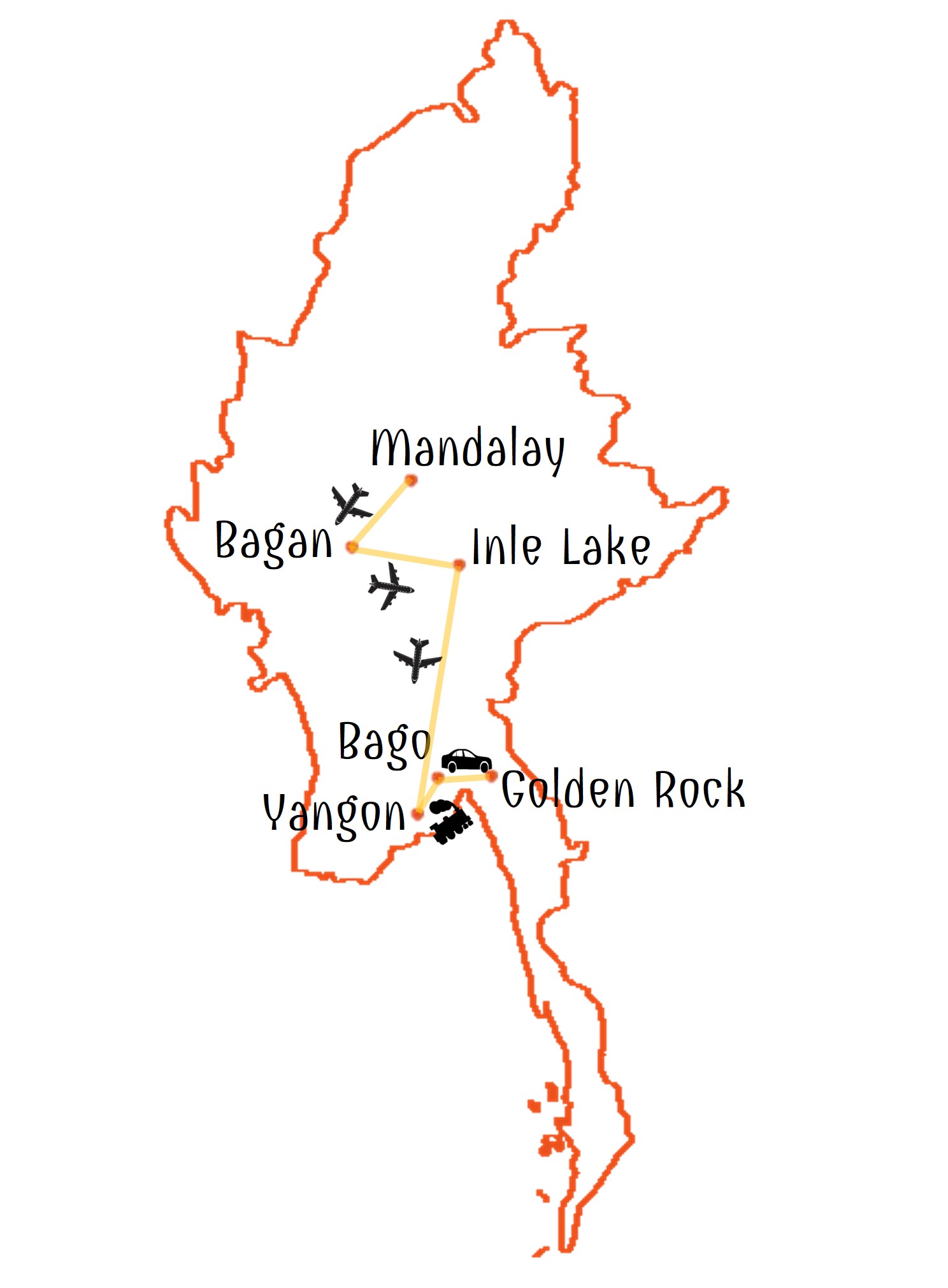
Check out our Travel Reflections articles on Myanmar:
2-WEEK ITINERARY IN MYANMAR
Here is the detailed itinerary of our two weeks in Myanmar:
Day 0: Overnight flight with a layover in China (Kunming). The total journey took 16 hours, including the layover.
Day 1: We arrive exhausted in Mandalay, the second-largest city and the last royal capital of Myanmar. We stroll around the present-day center and spend the evening along the walls of the Palace.
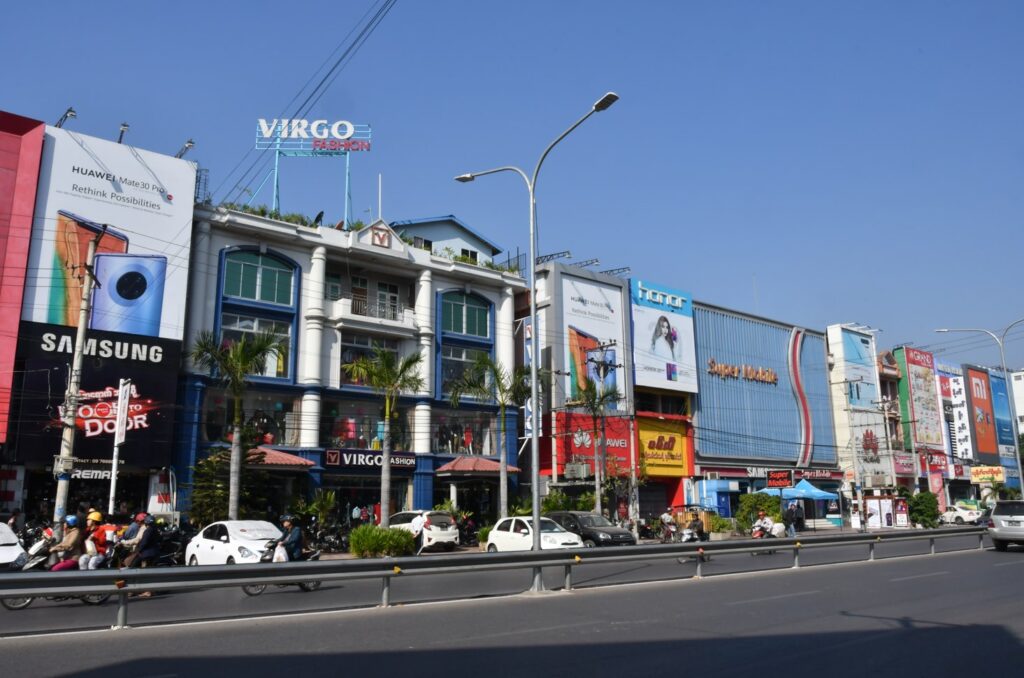
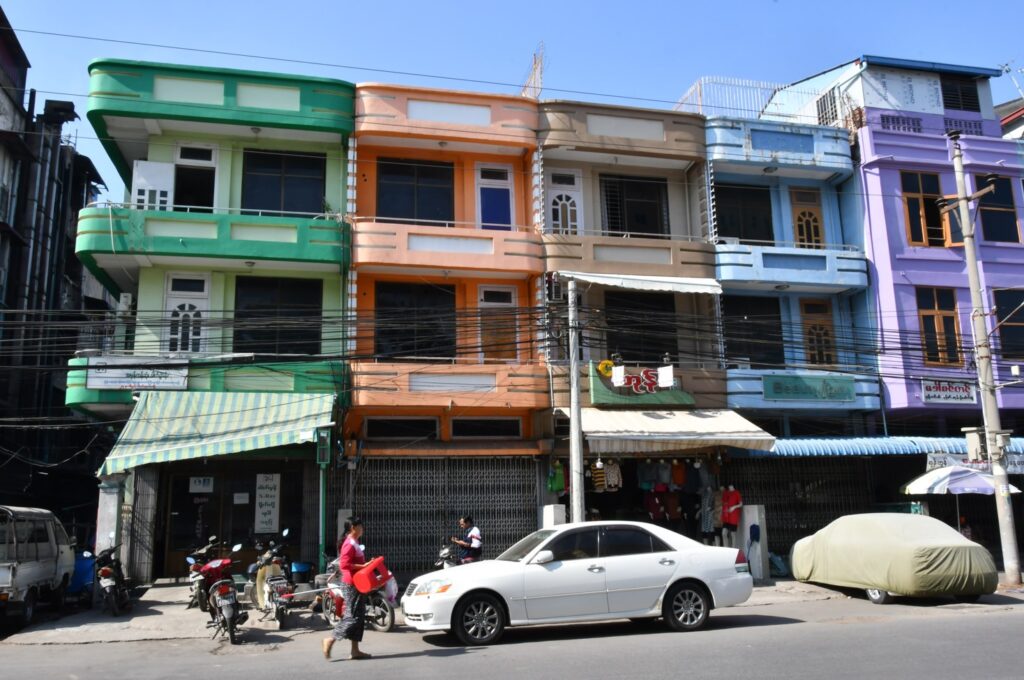
Day 2: After a good night’s sleep, we set out to explore the city by tuk-tuk! We begin with the magnificent Mahamuni Pagoda. Following tradition, we purchase gold leaves and affix them to an already adorned Buddha. Women aren’t allowed to approach Buddha and must content themselves with watching this ritual on a television screen…

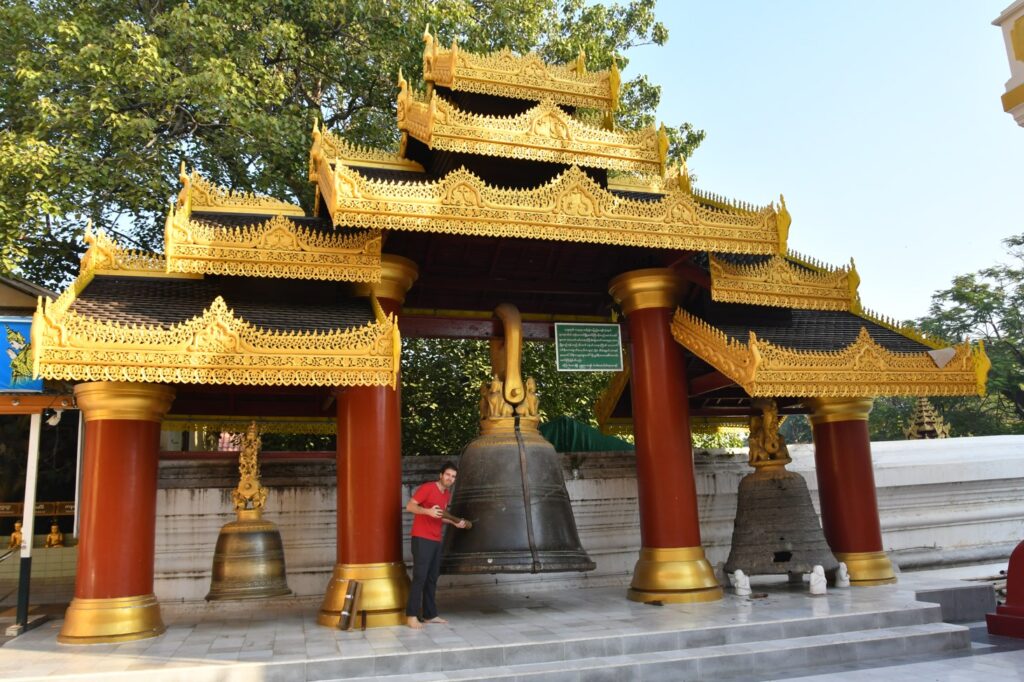

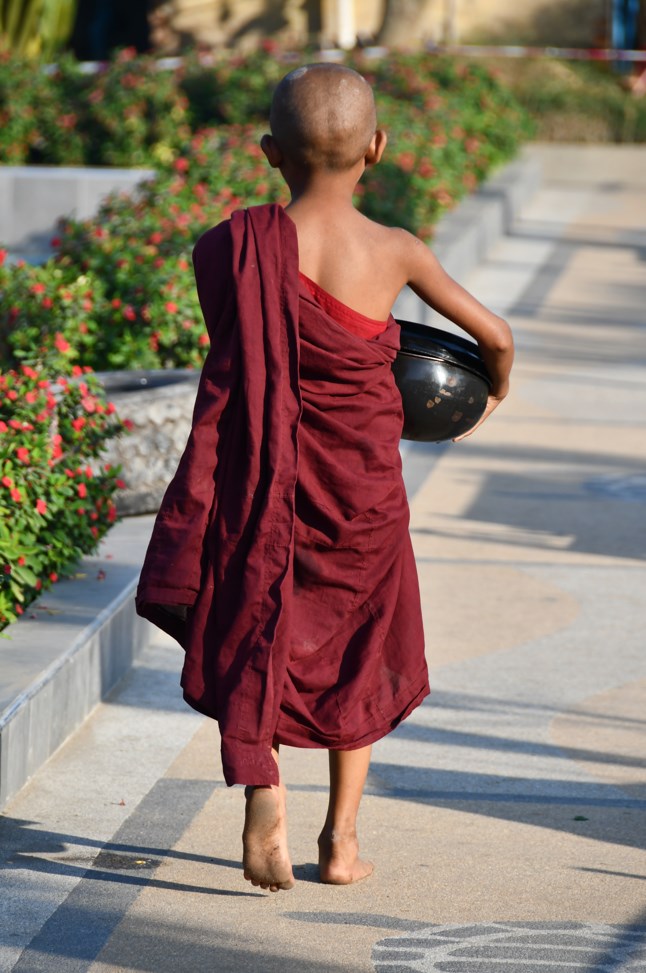
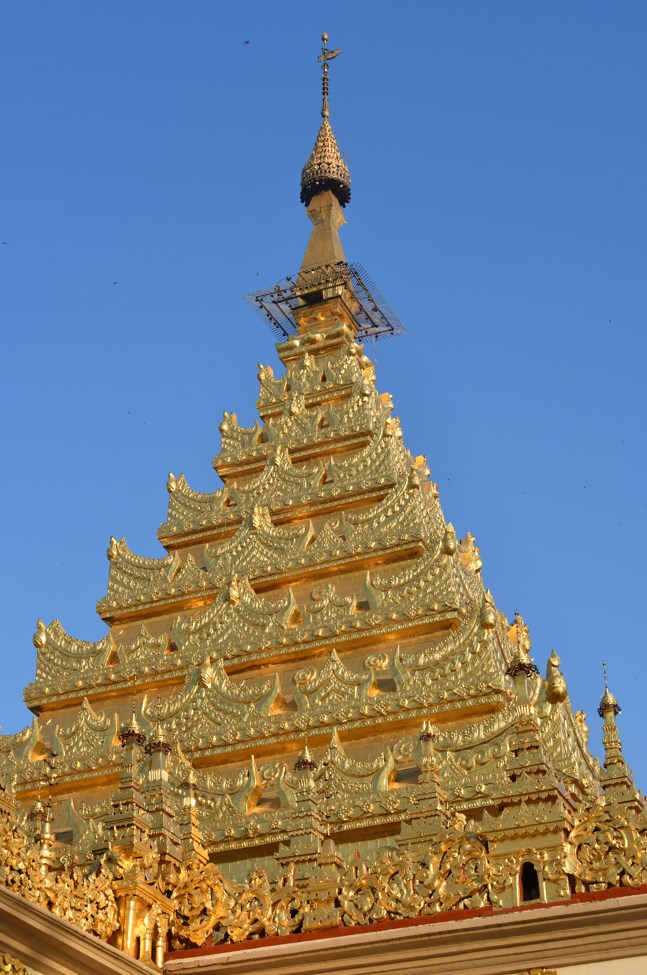
Quick shopping stop at the world’s largest jade market.
Then we visit the Shwe In Bin monastery, entirely crafted from carved wood. There’s no one around; we are the only visitors.
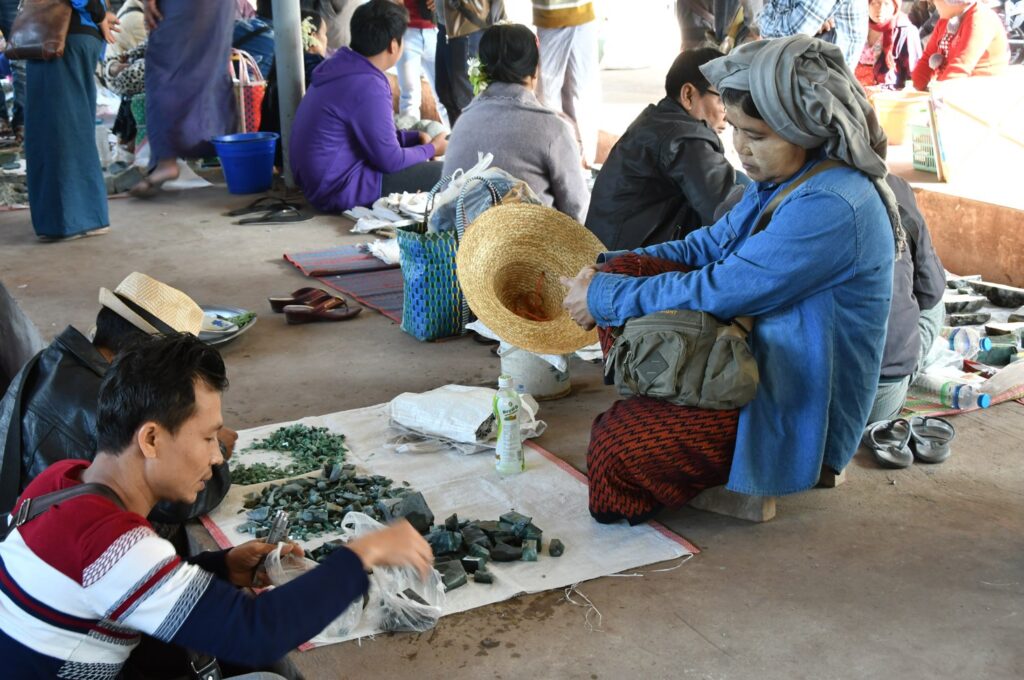
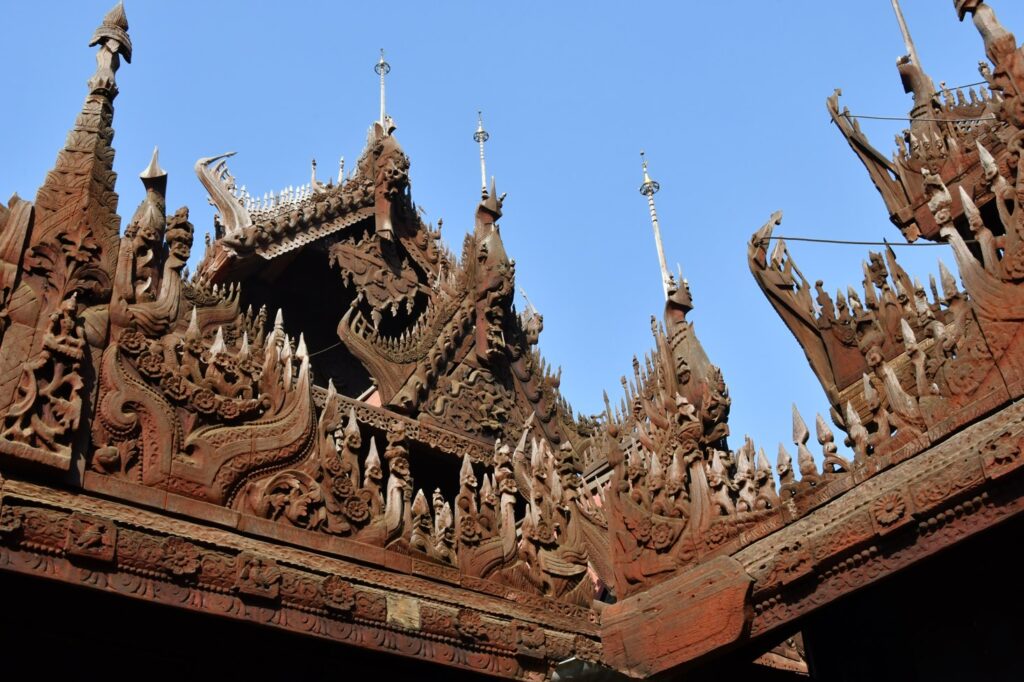
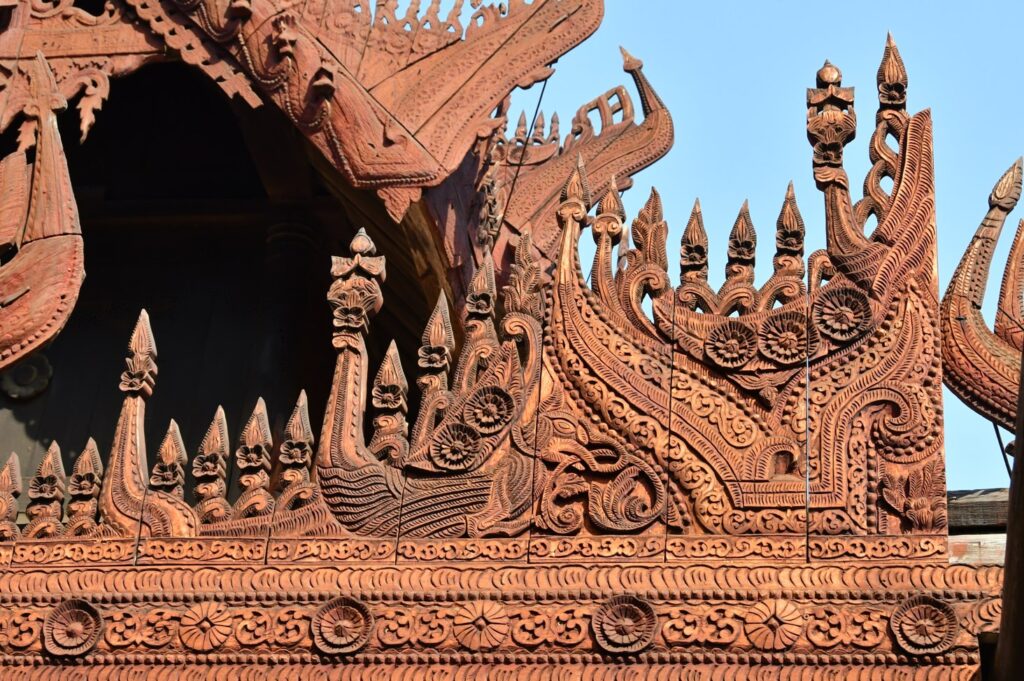
We then hop on a tuk-tuk to visit the Shwe Nandaw monastery before quickly touring the Atumashi Kyaung monastery.

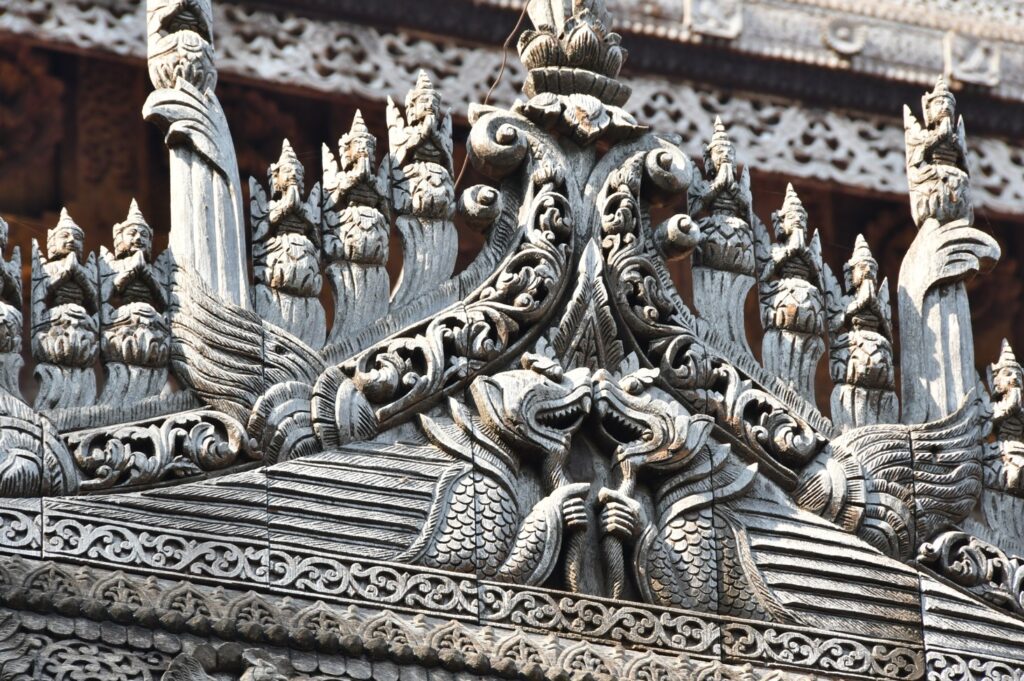
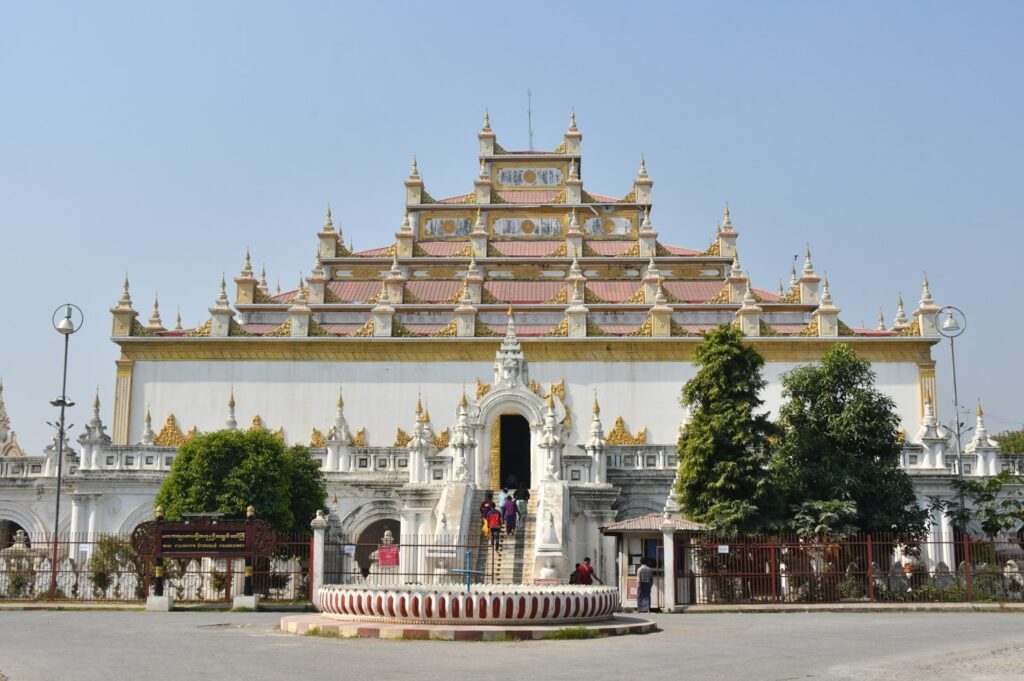
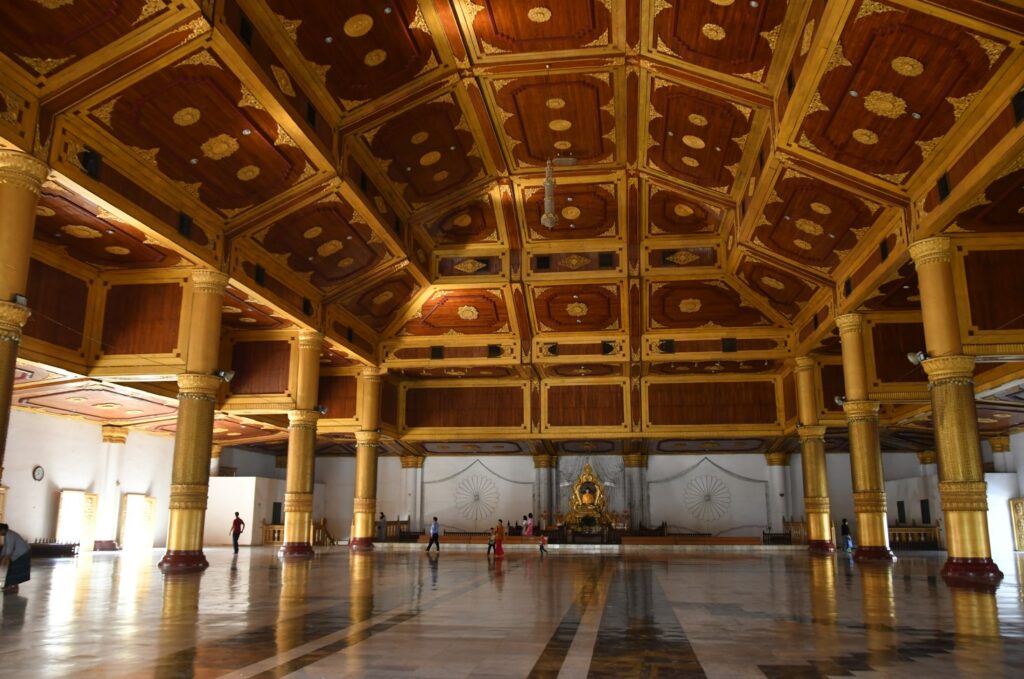
A bit further, and much more beautiful: the Kuthodaw Pagoda and its 729 marble slabs, which make up the world’s largest open book.
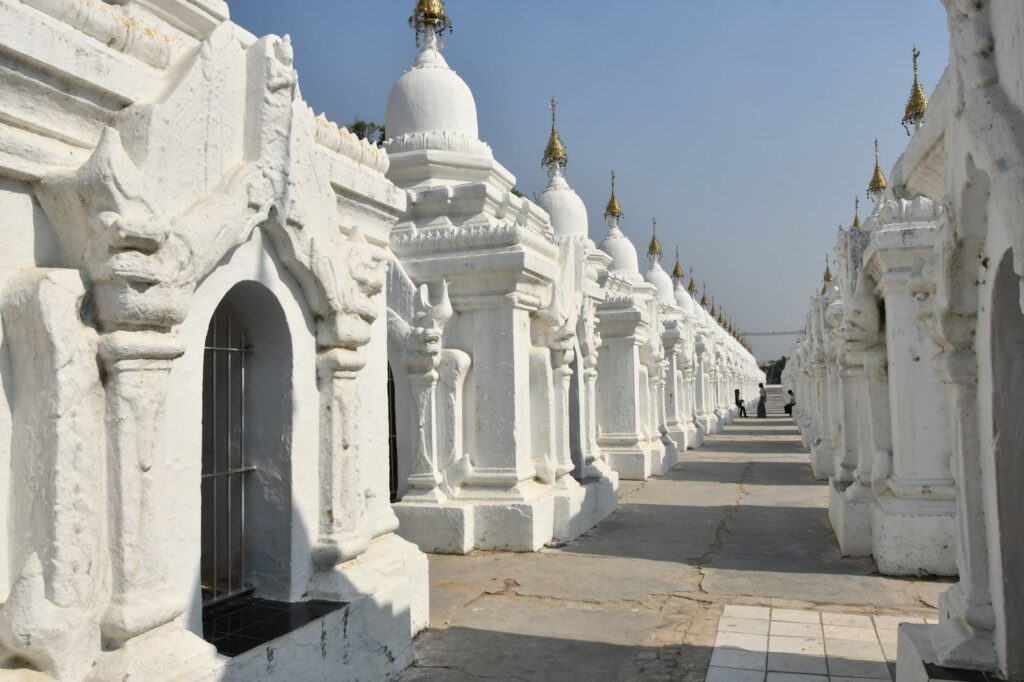
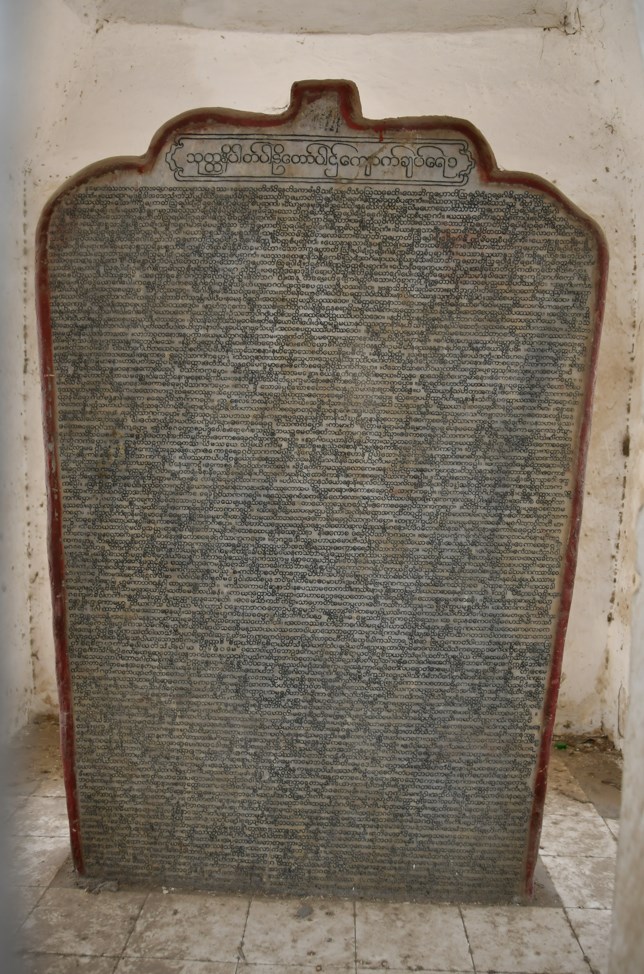
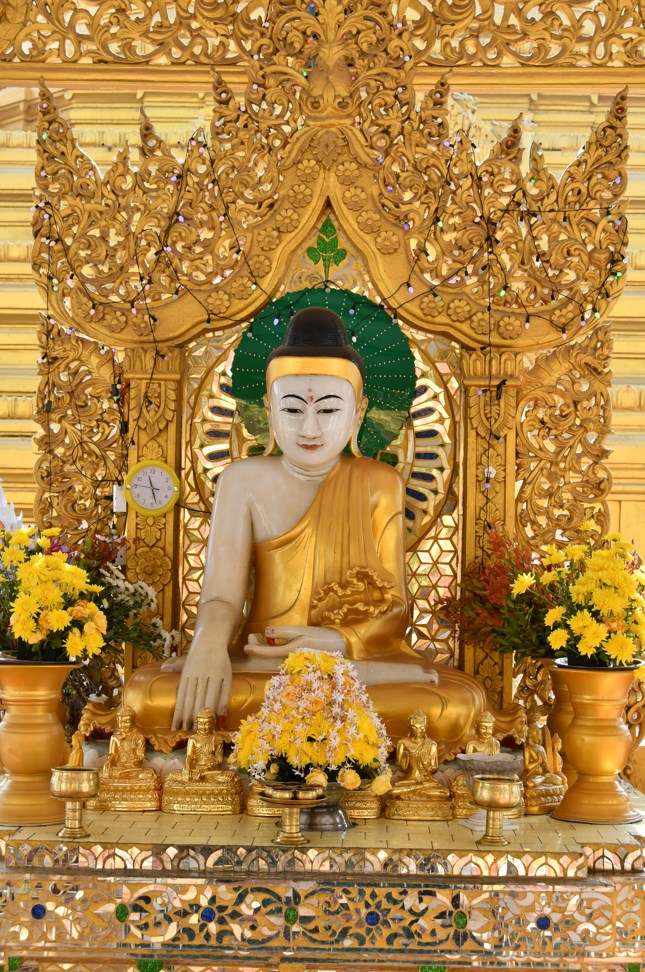
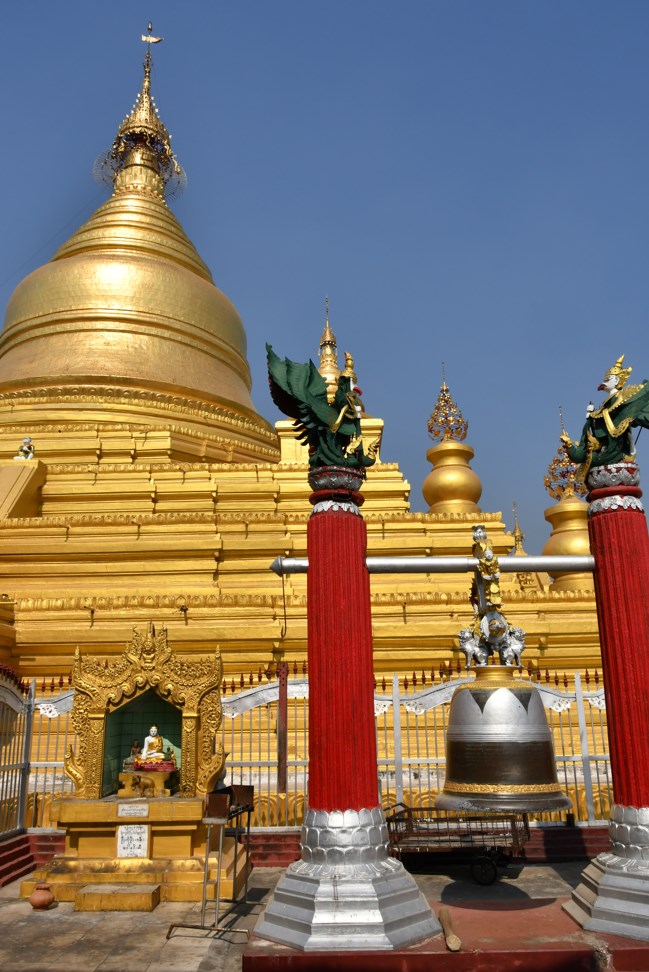
The day isn’t over! We purchase longyis, a kind of Burmese sarong, before visiting the Sandamuni Pagoda.
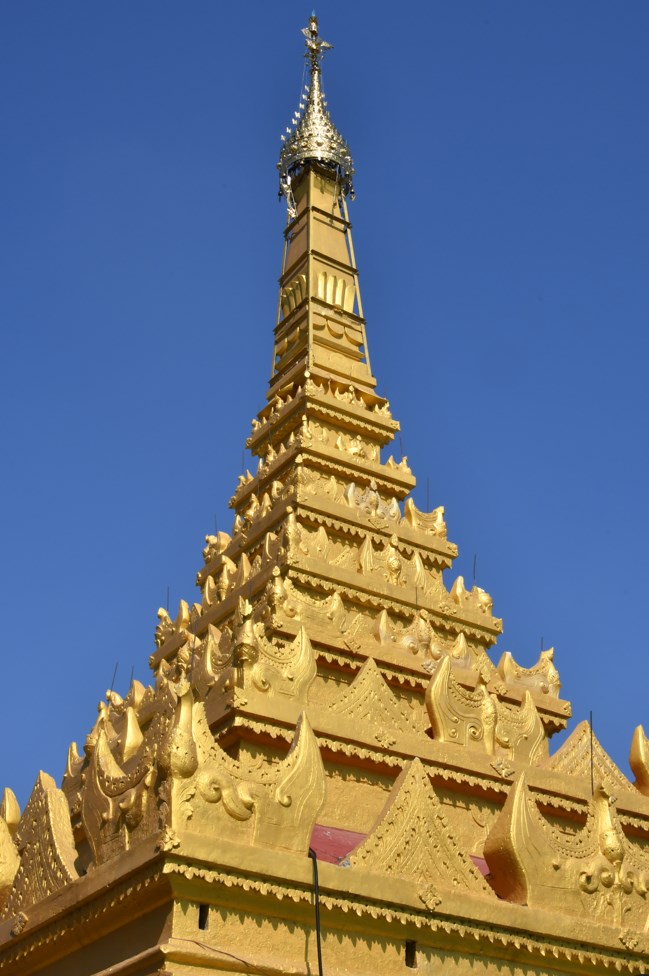

Visit to the Kyauktawgyi Pagoda. No, we aren’t already overloaded with pagodas! For now, the pagodas may follow one another, but they’re all unique and very beautiful. Plus, it’s our first Southeast Asian country, so it’s all new for us.
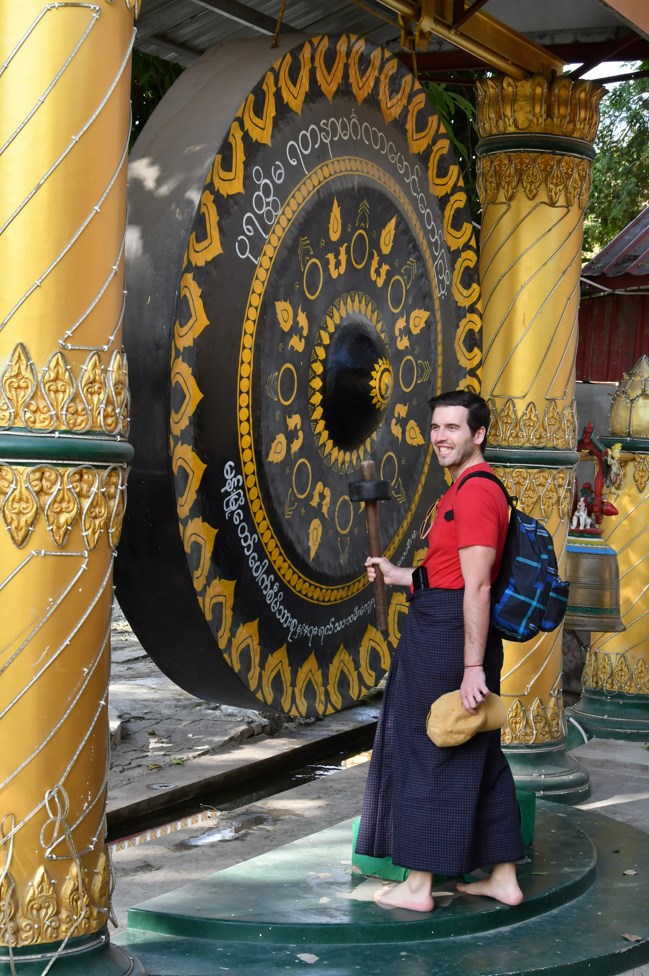
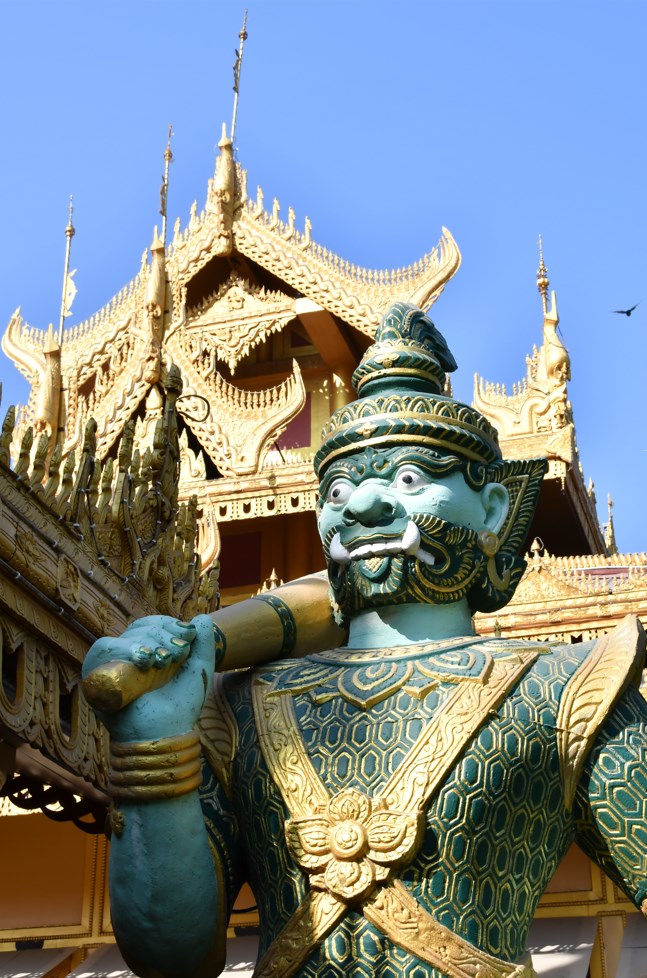

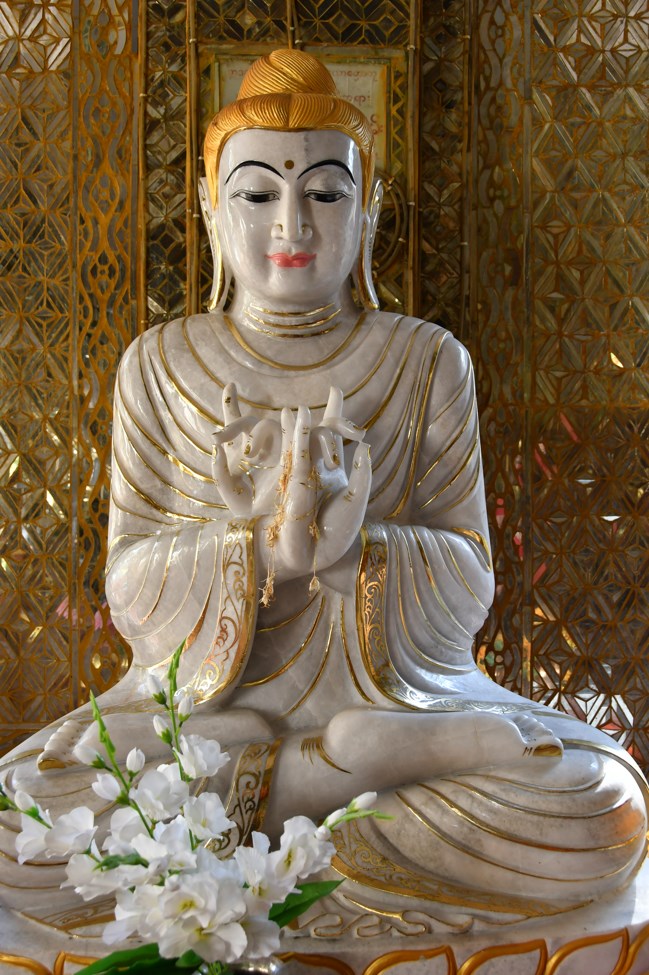
We muster our last bits of energy to climb to the top of Mandalay Hill. The day was full of discoveries, but the schedule was packed! It’s possible to cover the same itinerary in two days at a slower pace. If we had to remove some things, Mandalay Hill and the Atumashi Kyaung monastery could have been skipped.

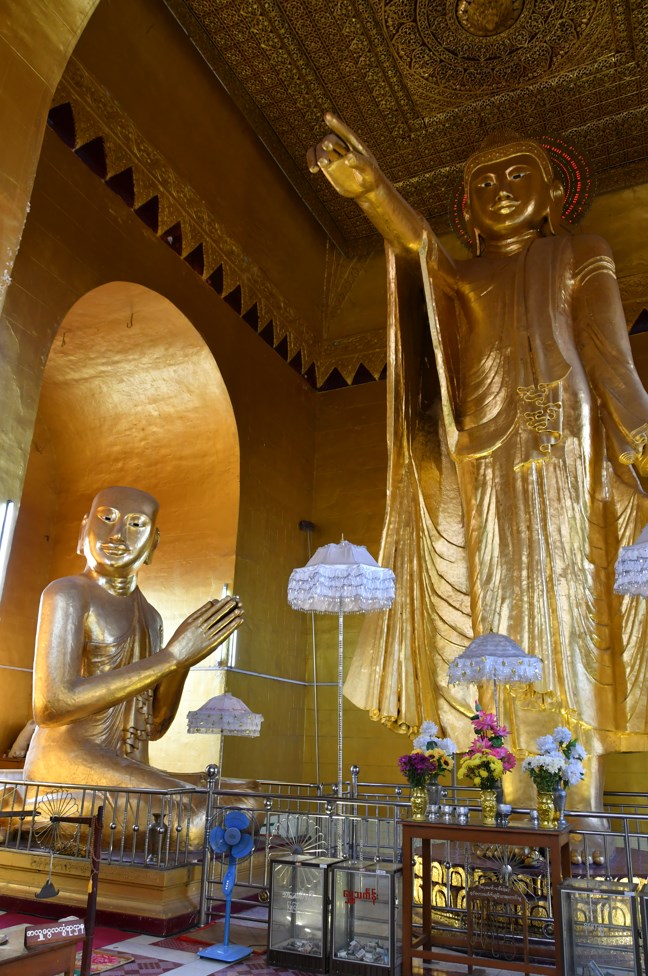
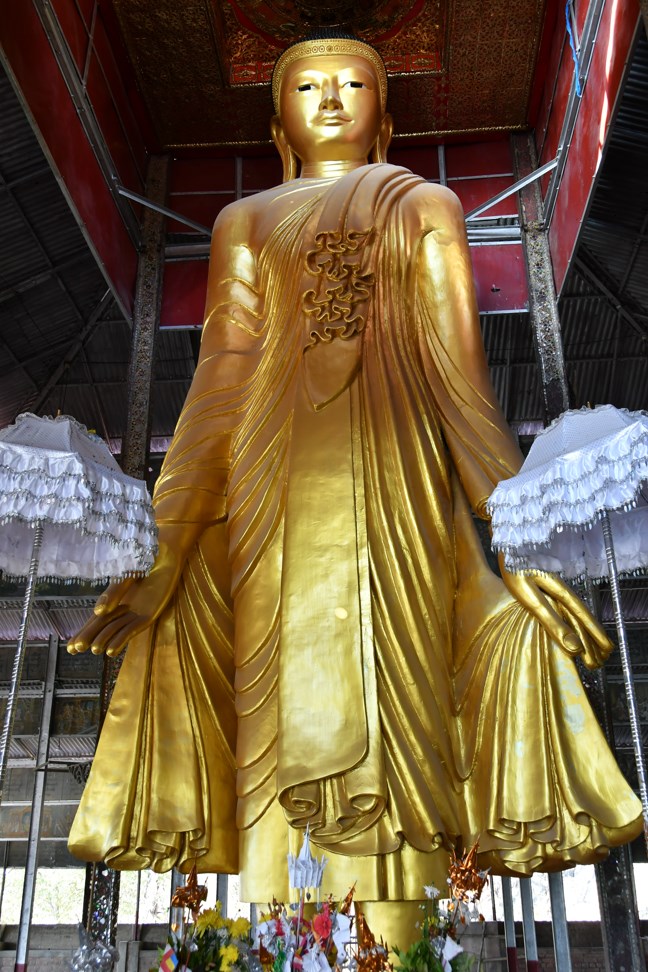
Day 3: Up at 4:30 am, we set off by taxi to visit the former royal capitals in the Mandalay region. We asked our hotel the day before, and they easily arranged a taxi for us. The itinerary was quite set, but the day was marvelous.
We start with the serenity of the sunrise at U Bein Bridge (Amarapura). We had debated a lot: was it necessary to wake up so early to see a sunrise? But we didn’t regret it. There weren’t many people, and the moment was truly magical. Very calming.
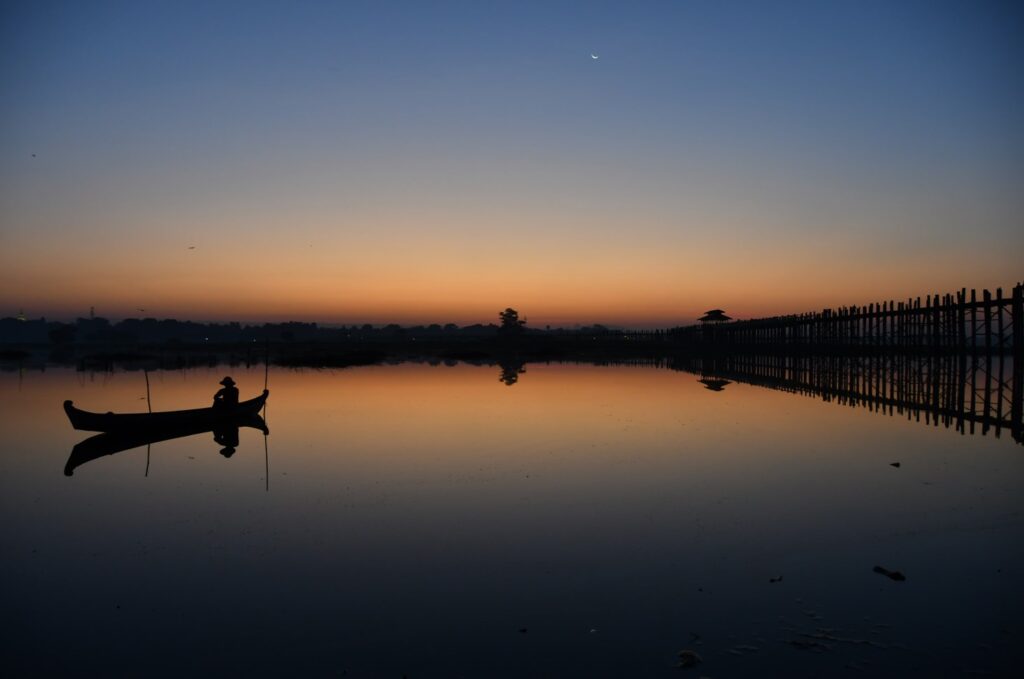
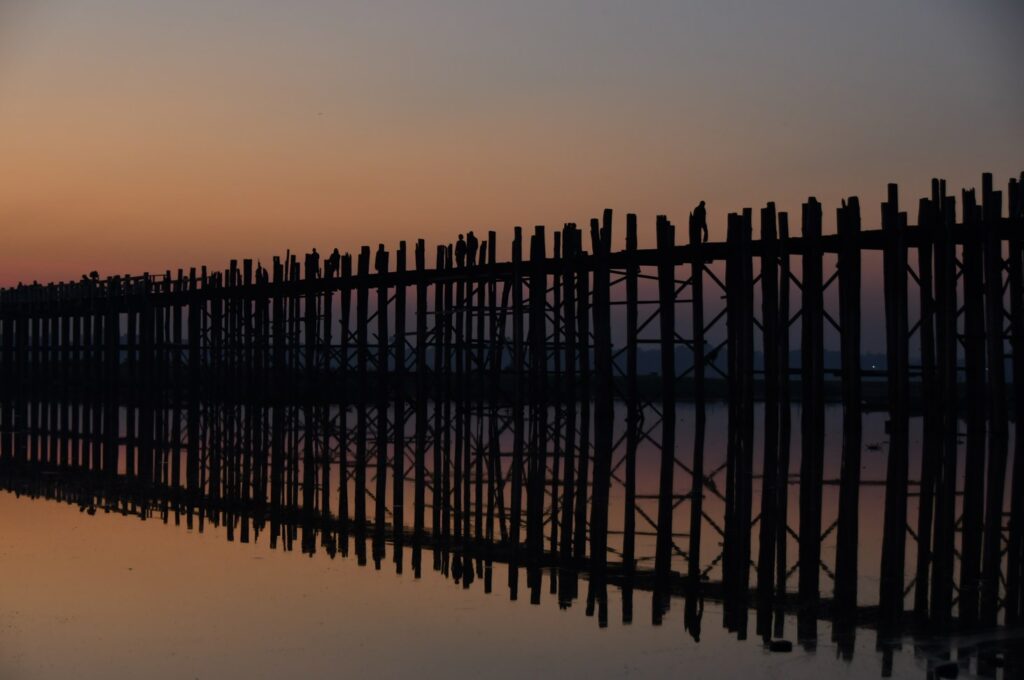

Then we cross the bridge and visit the Shin Pin Shwe Gu Pagoda.

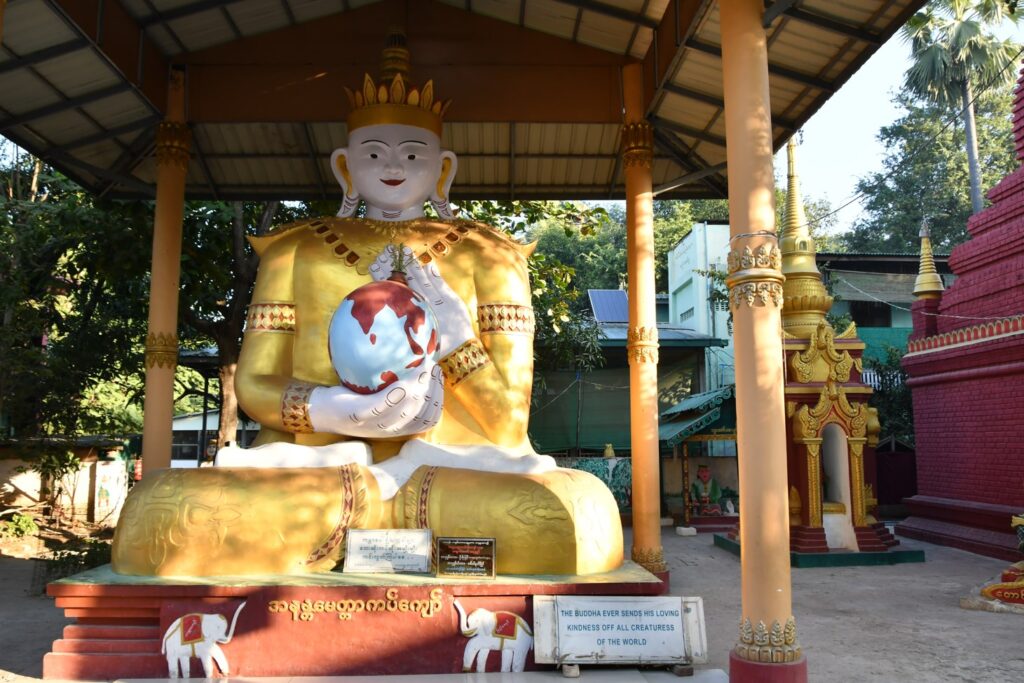
Next, we visit the Kyauktawgyi Pagoda, which showcases beautiful paintings, something quite rare in Myanmar.
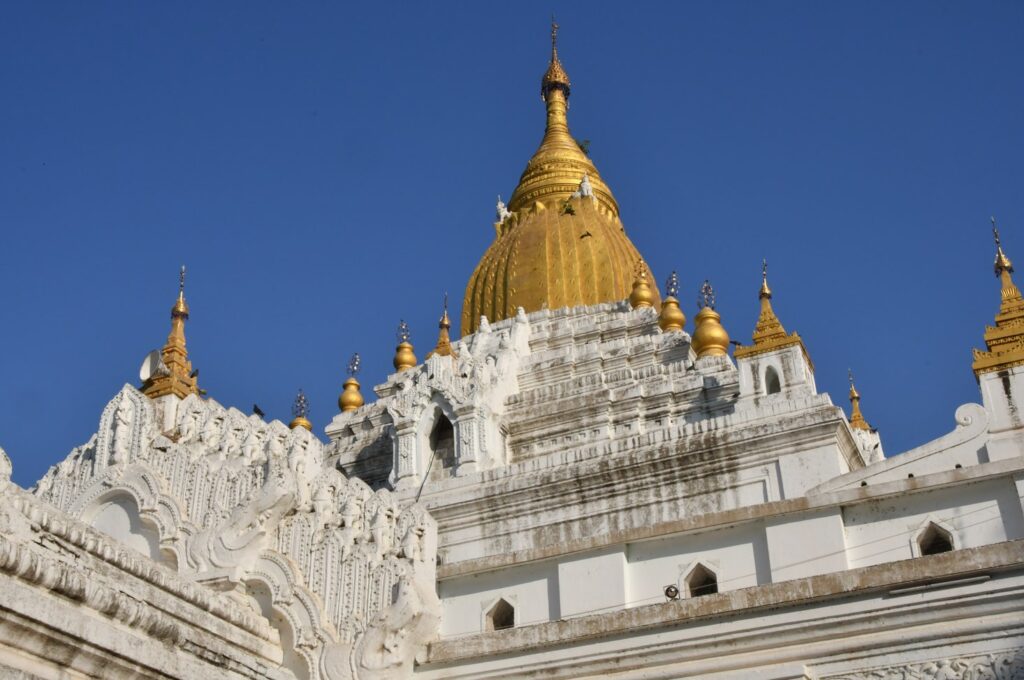
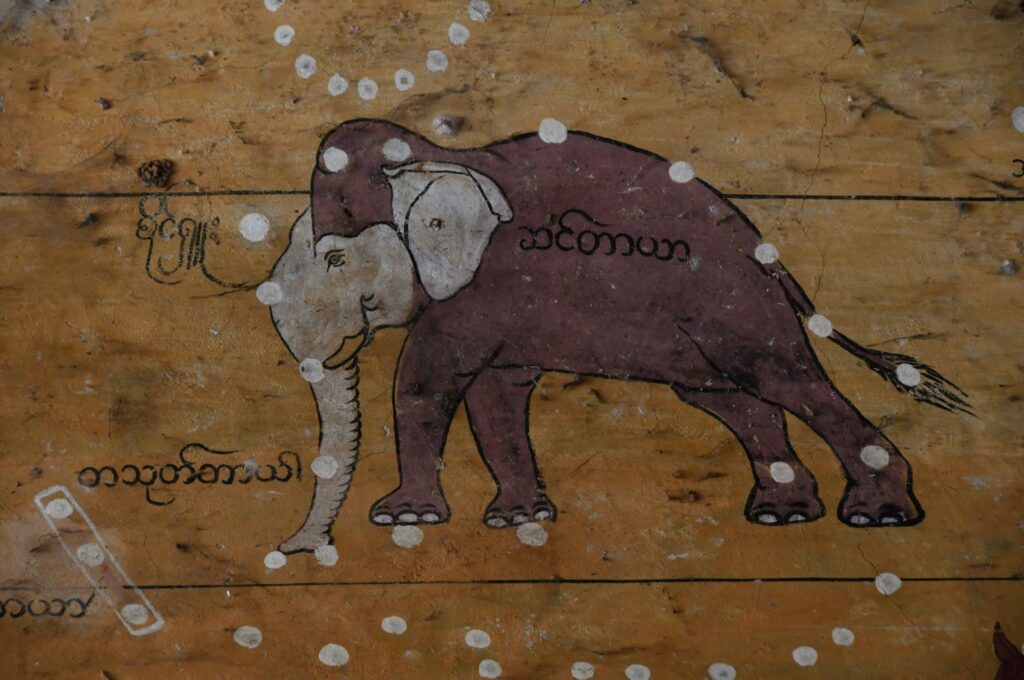
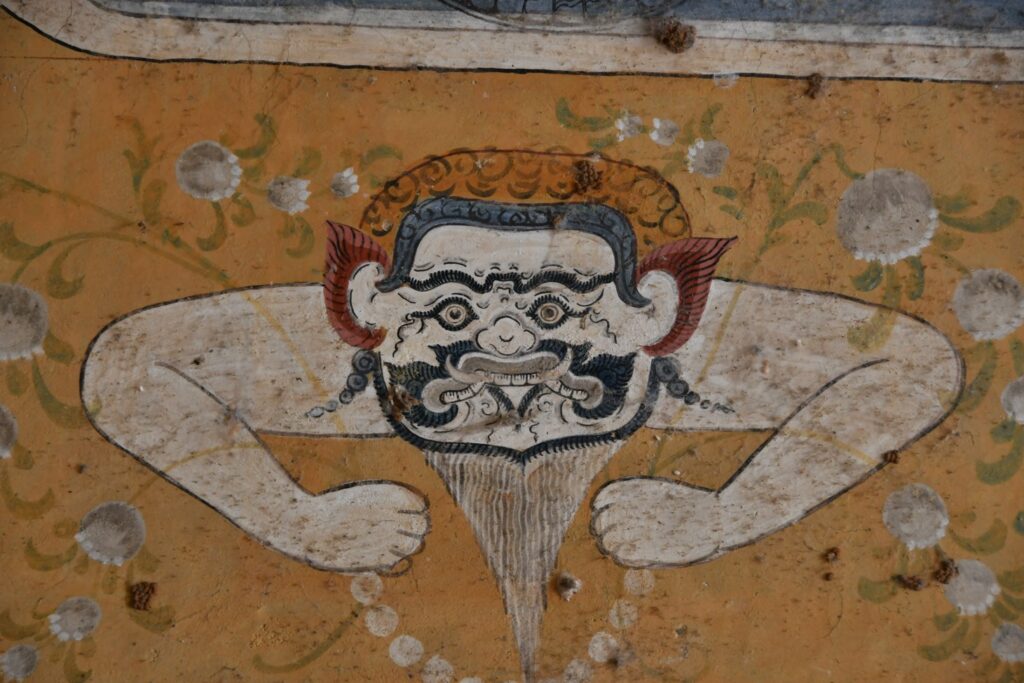
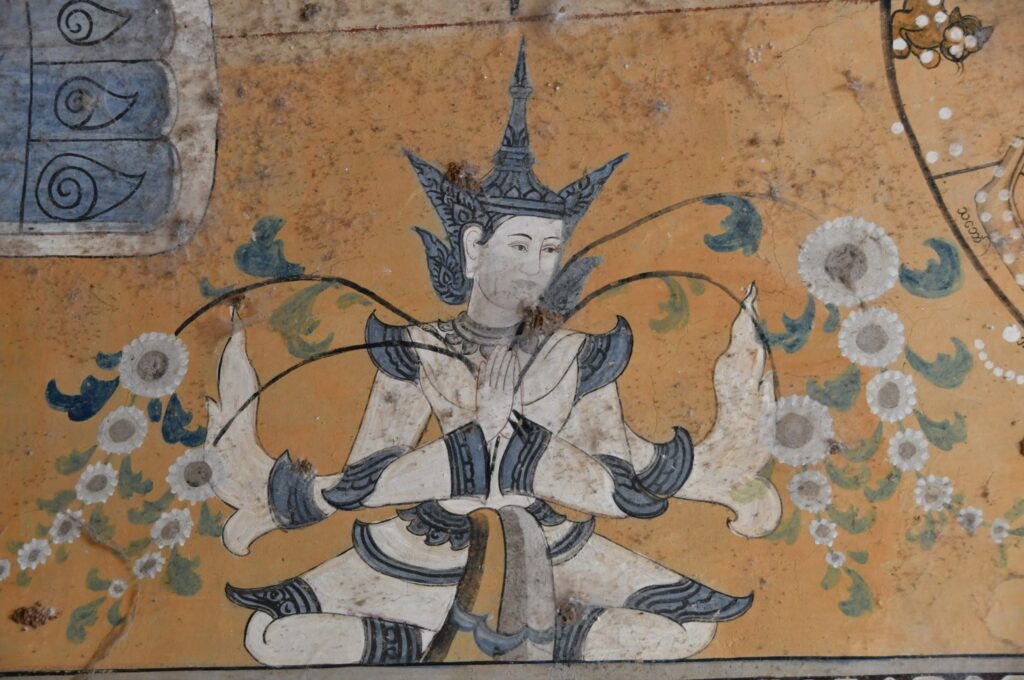
Next, we go to witness the lunch of the 1,000 monks at the Mahagandhayon Monastery. It was very impressive, but the overwhelming number of tourists, mostly Chinese, and their often inappropriate behavior made the moment less magical and serene…
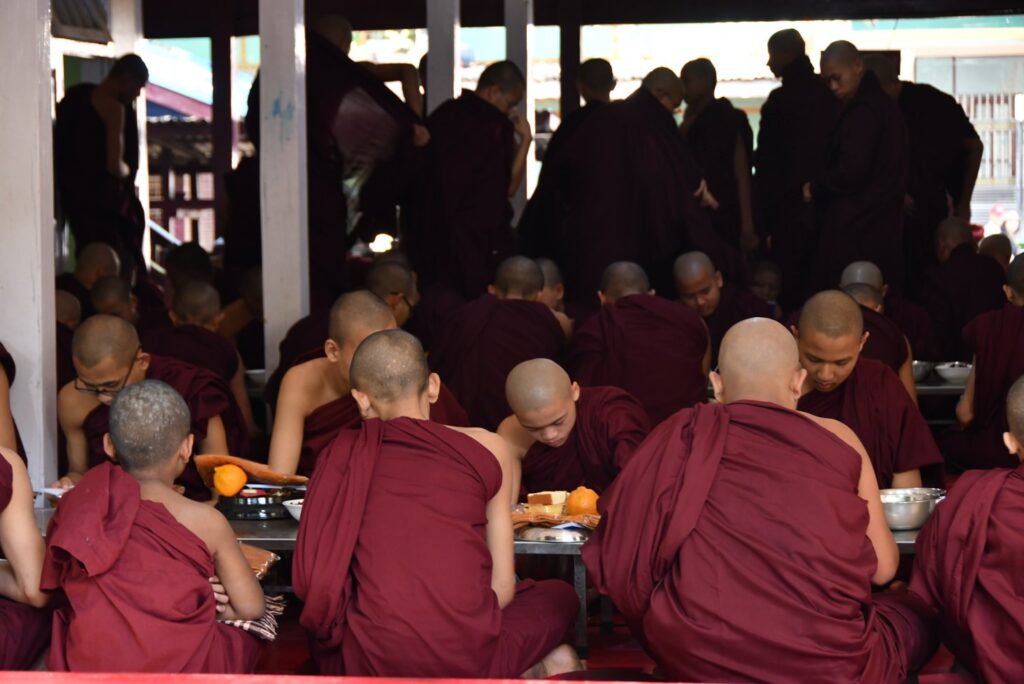
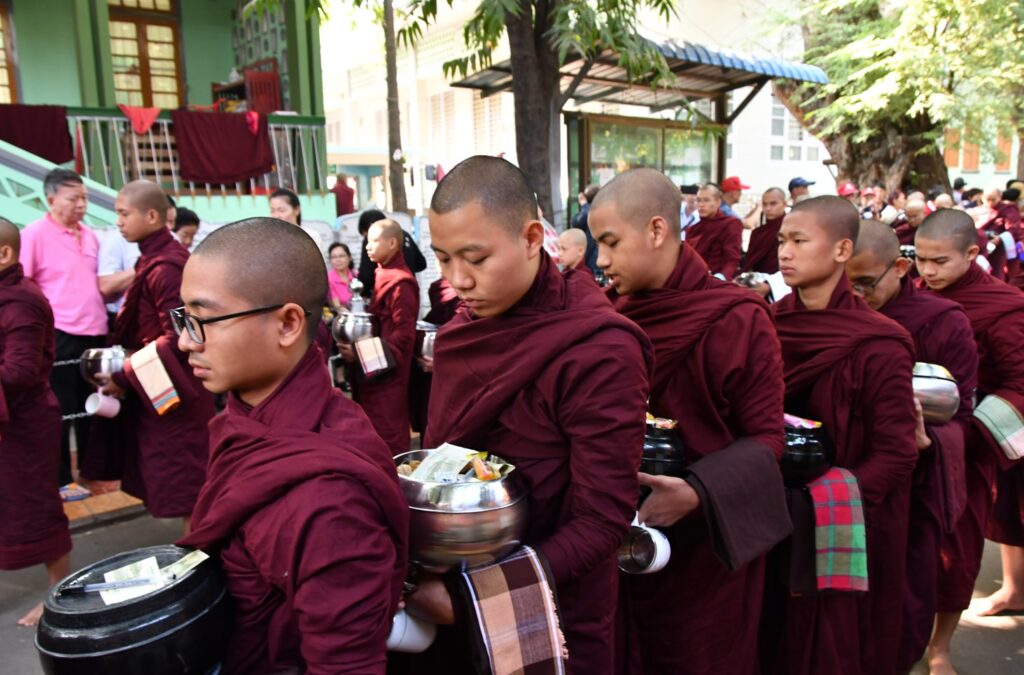
After a quick stop at a silk factory (I should note that at no point in Myanmar did we feel obligated to buy during these stops, unlike stops in Egypt), we cross the Irrawaddy River. Visit to the magnificent Umin Thonze Pagoda.

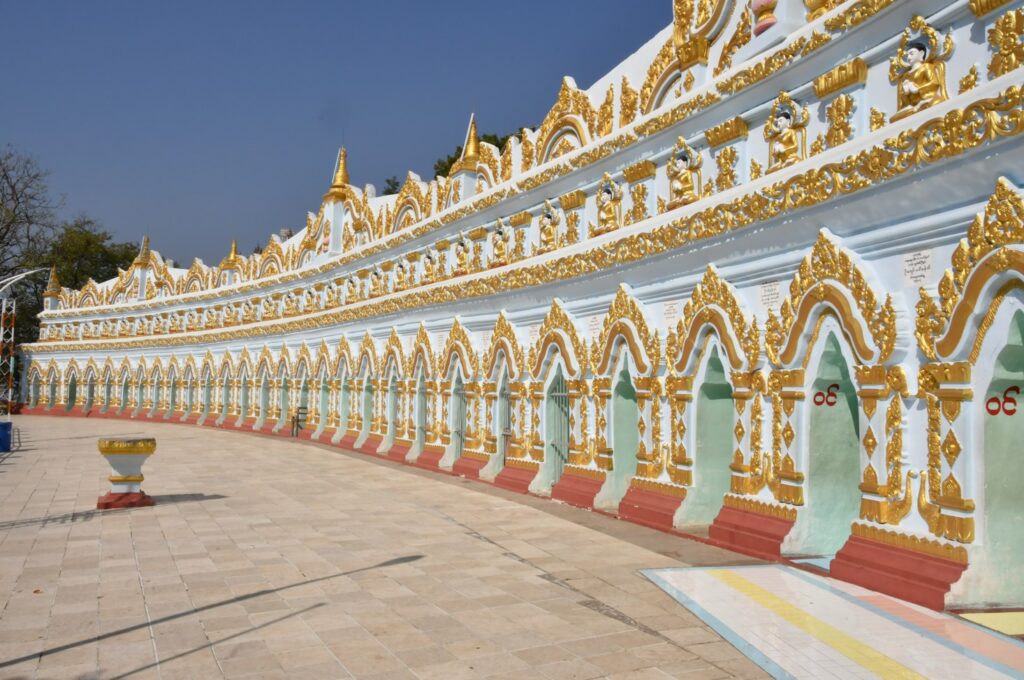
Then a visit to the U Ponya Pagoda.
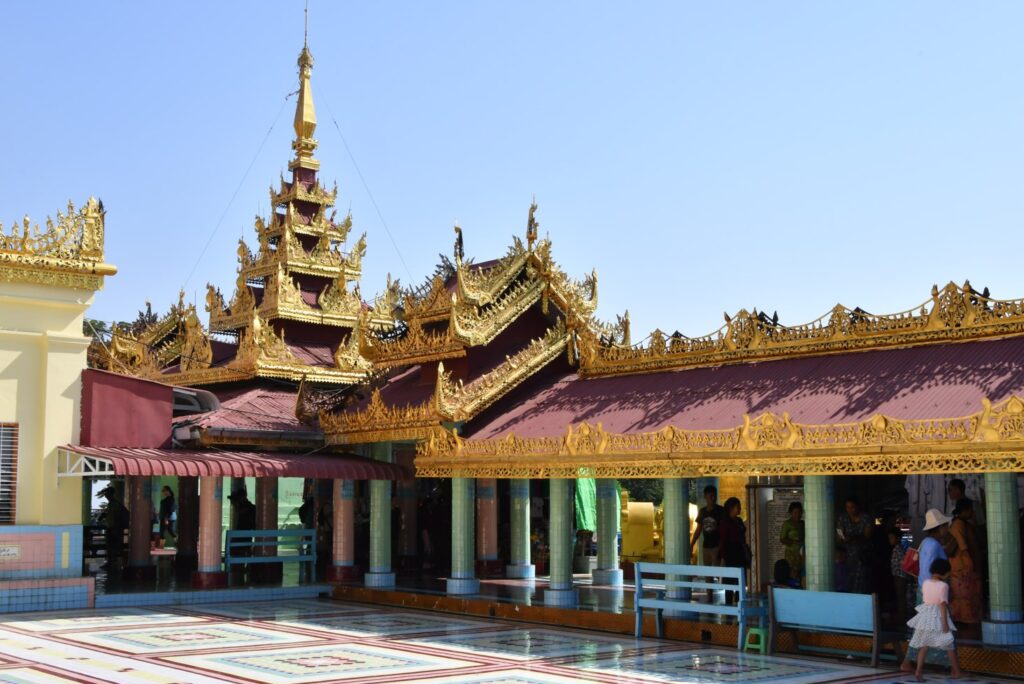
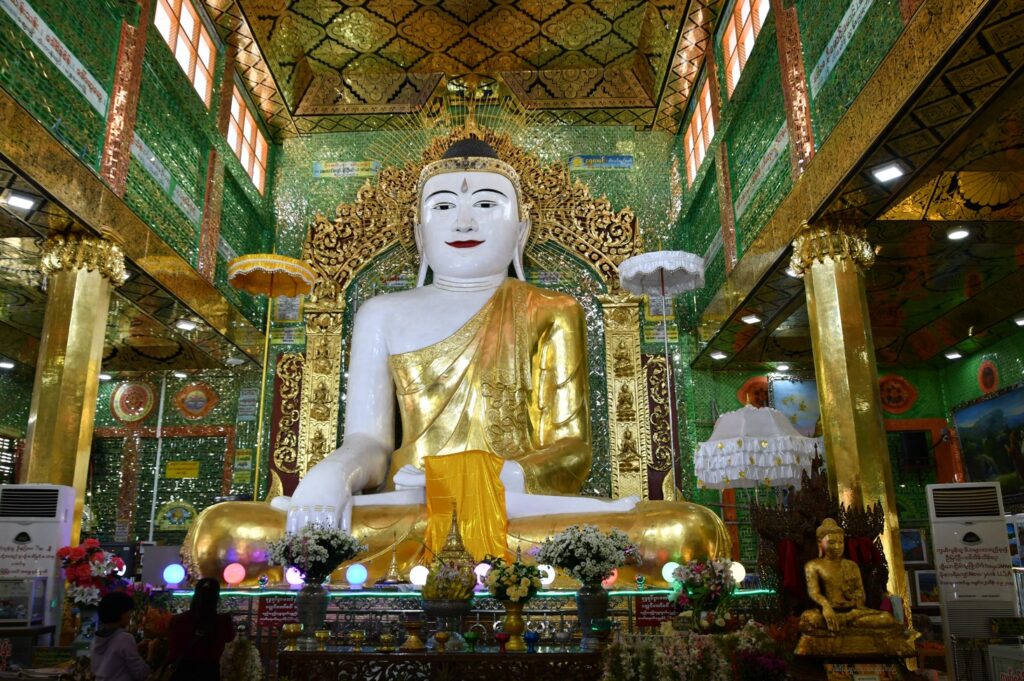
We make a stop at the small Ariyar Wamsa monastery, all made of intricately carved wood.
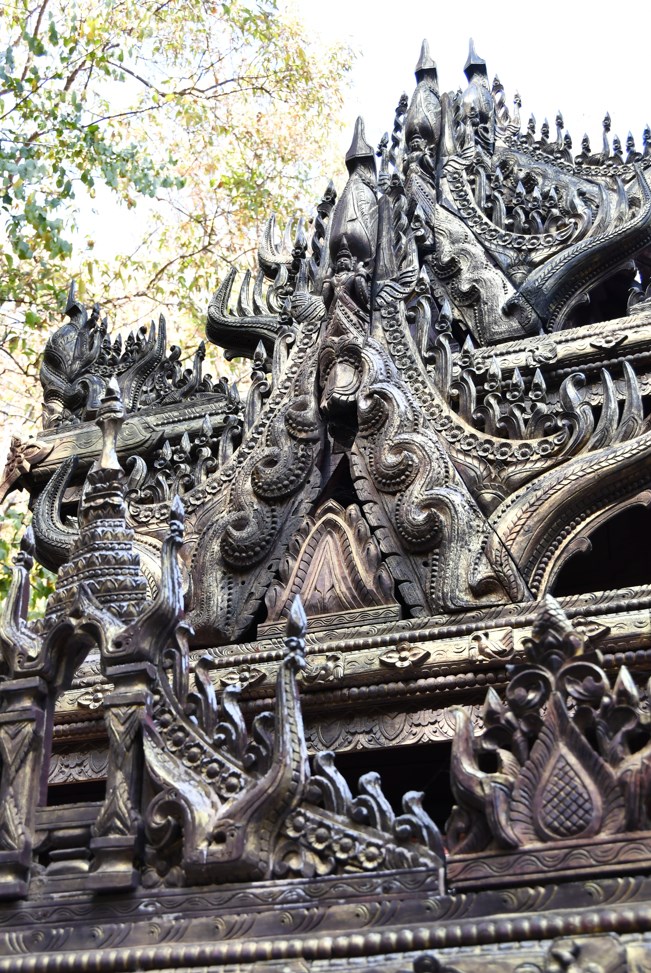

Once in Mingun, we visit the incredible Mya Thein Tan Pagoda. We ring the Mingun Bell before going to see the Mingun Pagoda.
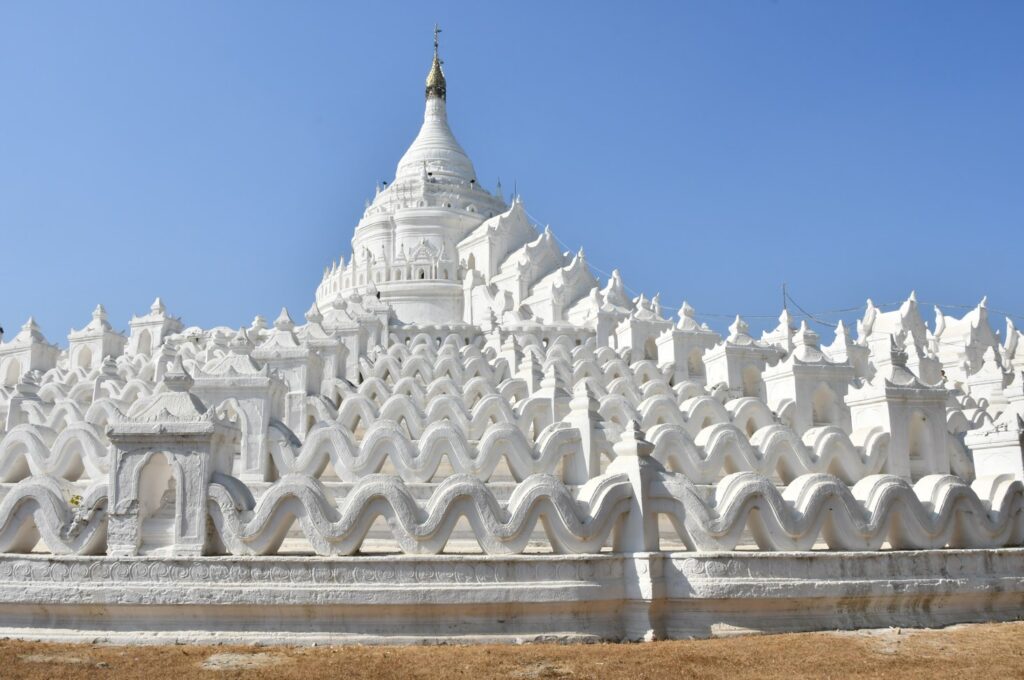
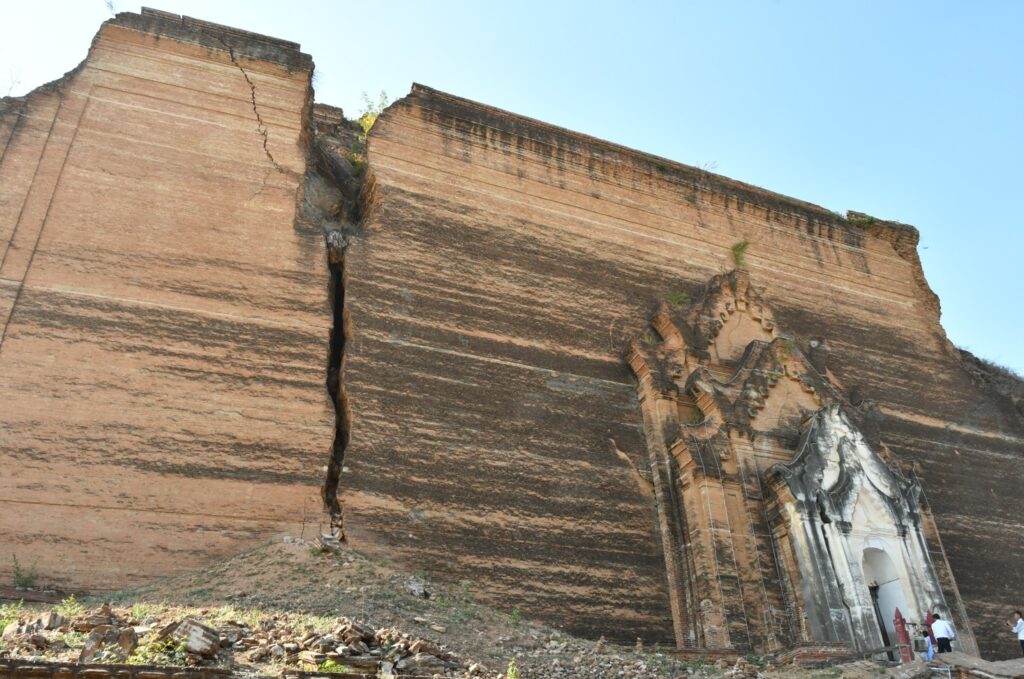
We were fortunate to witness a procession of a novitiate ceremony through the streets of Mingun. This novitiate (shinbyu) signifies the mandatory ordination of every young Burmese boy before turning 20, akin to a rite of passage into adulthood.

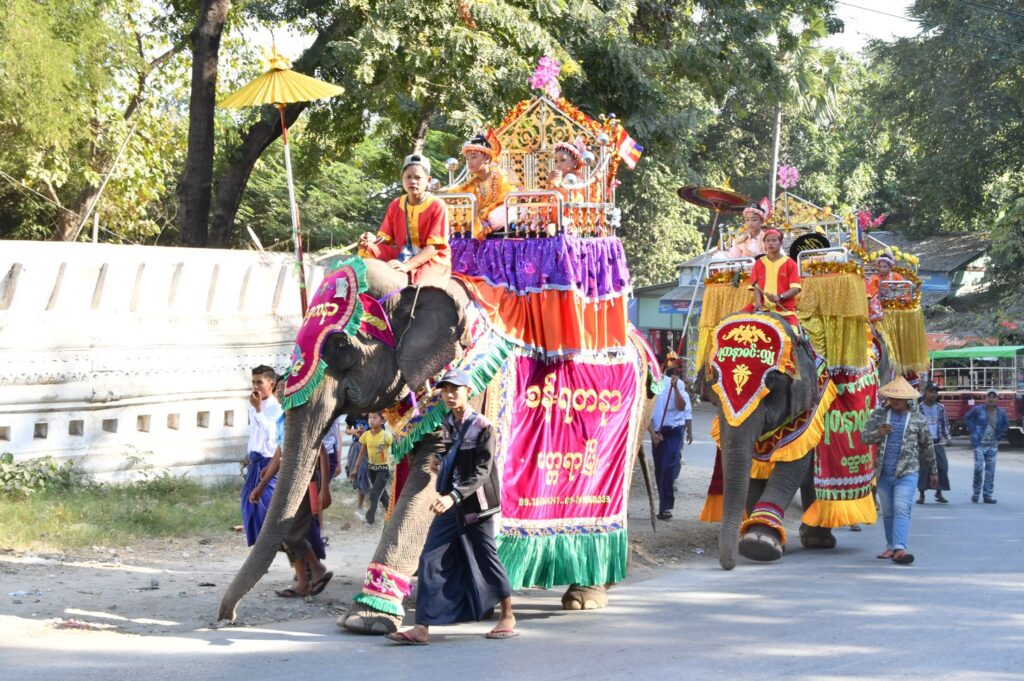
We then leave Mingun, cross the Irrawaddy by boat, and visit Inwa by horse carriage. On the agenda: the Bagaya Kyaung monastery. Followed by a visit to the Maha Aung Mye Bon Zan monastery.
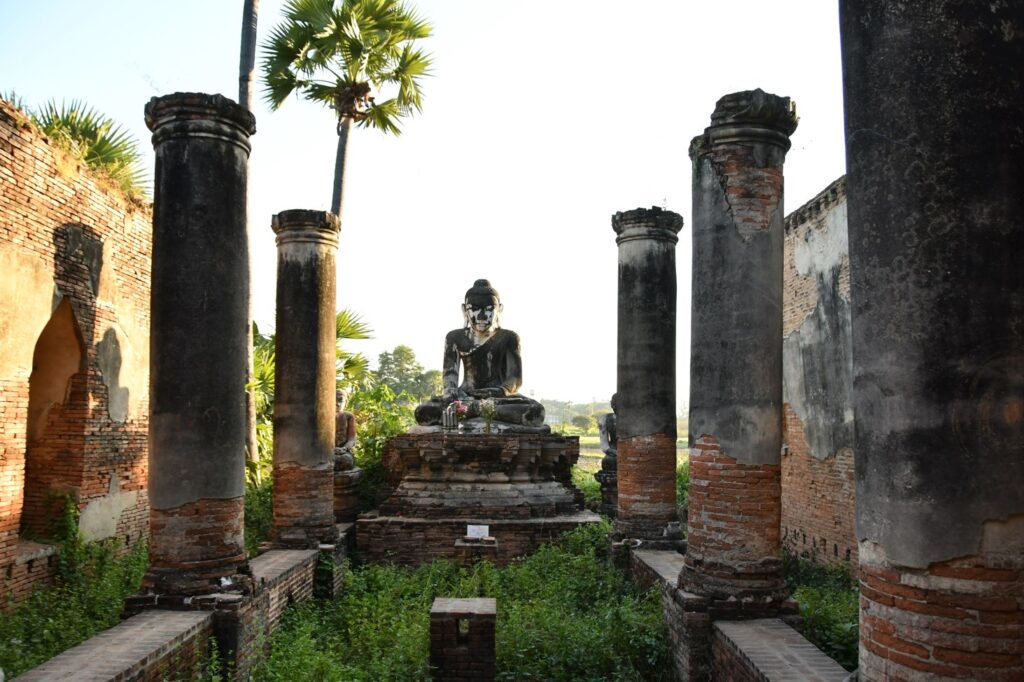
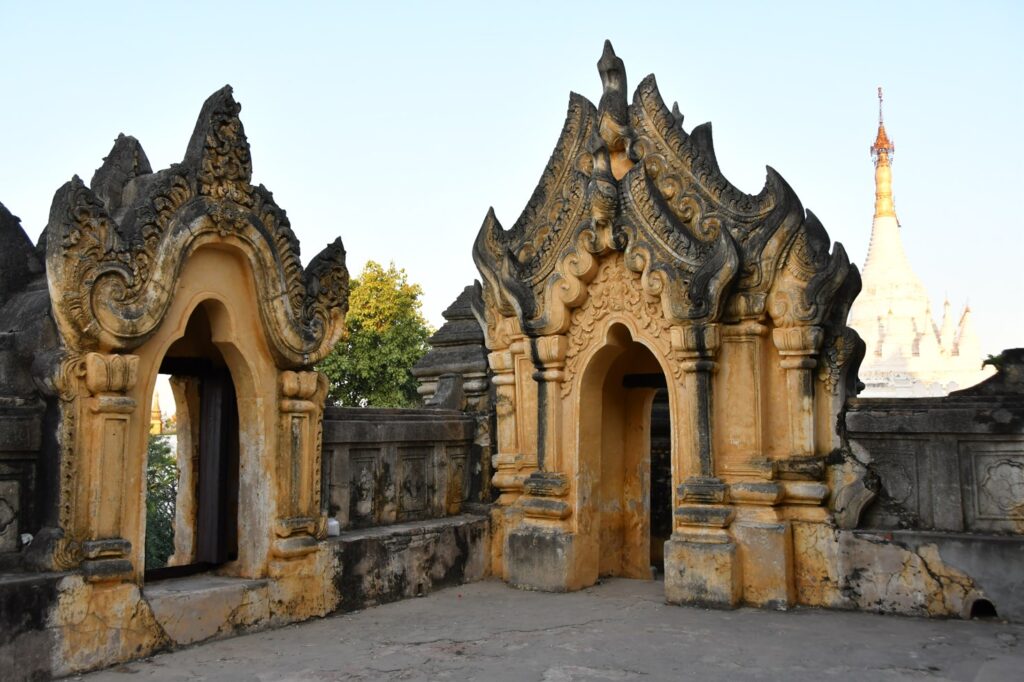

It’s time to return to Mandalay. Another day filled with discoveries! Some people do the route by scooter, but then the day becomes more tiring.
Day 4: After two busy days, we take it easy and enjoy Mandalay city. Especially because it’s Christmas today! We stroll around the city market.
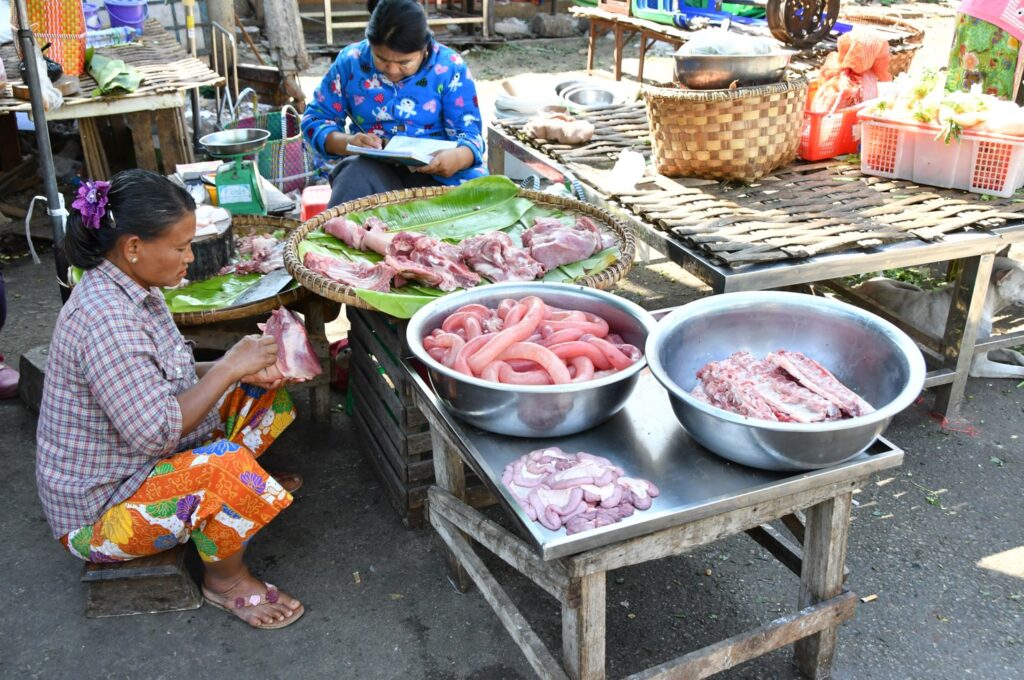
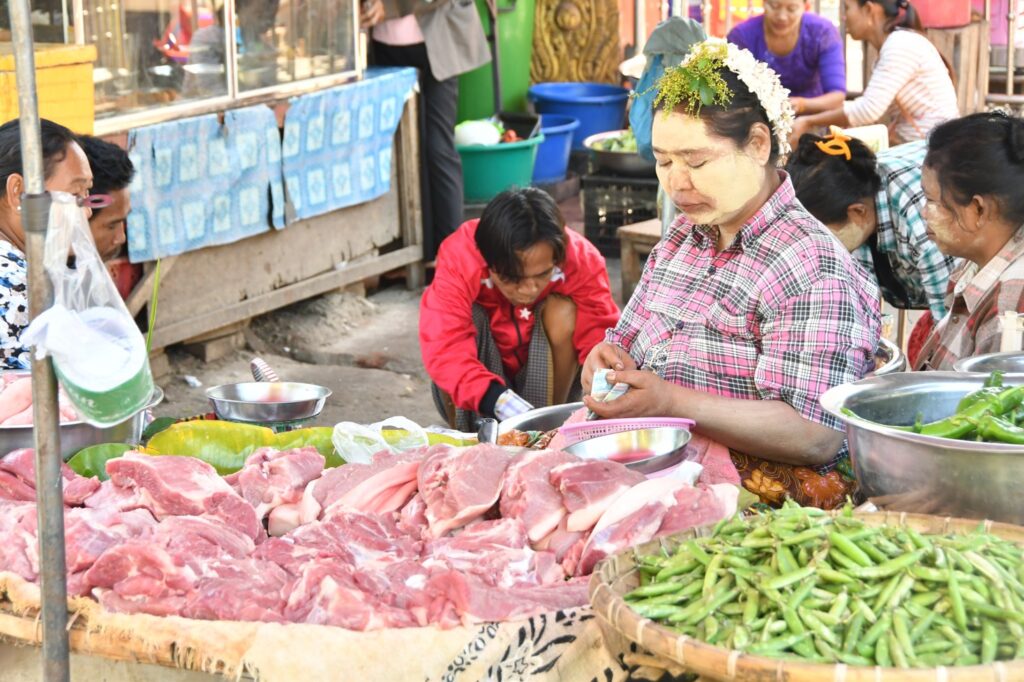
Then we visit a workshop for making gold leaves. At the end of the day, we take the plane headed to Bagan.

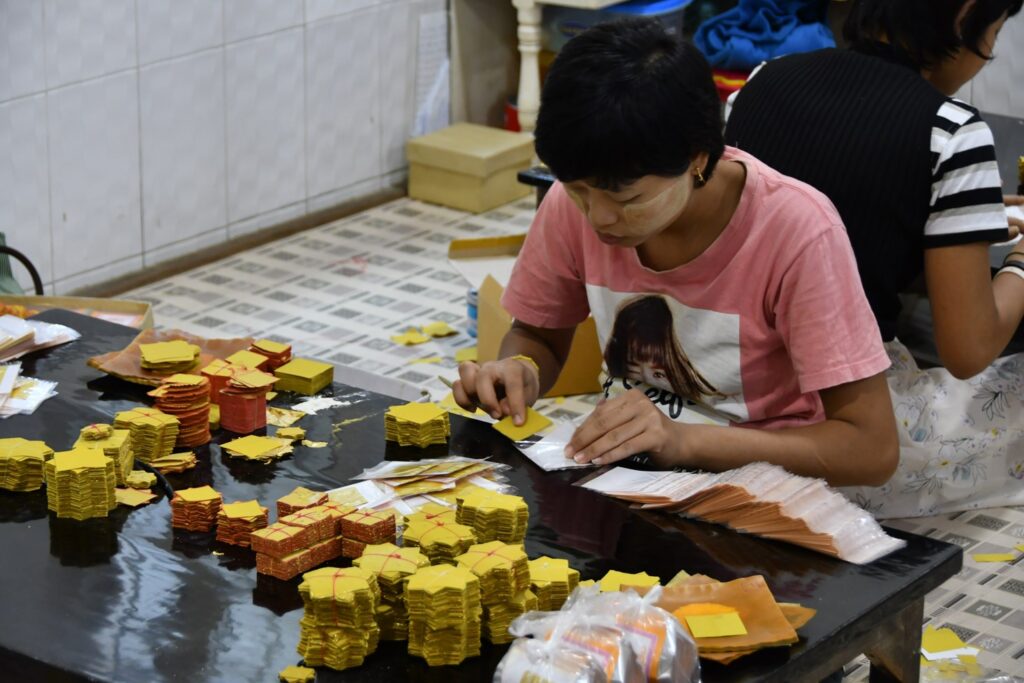
Day 5: We decide to heed the advice of bloggers, which unanimously suggests renting an electric scooter. It turned out to be a bad idea! The vehicles rented in Bagan are not stable at all, and we narrowly avoided disaster more than once… However, we still managed to visit some of the pagodas and temples in Bagan.
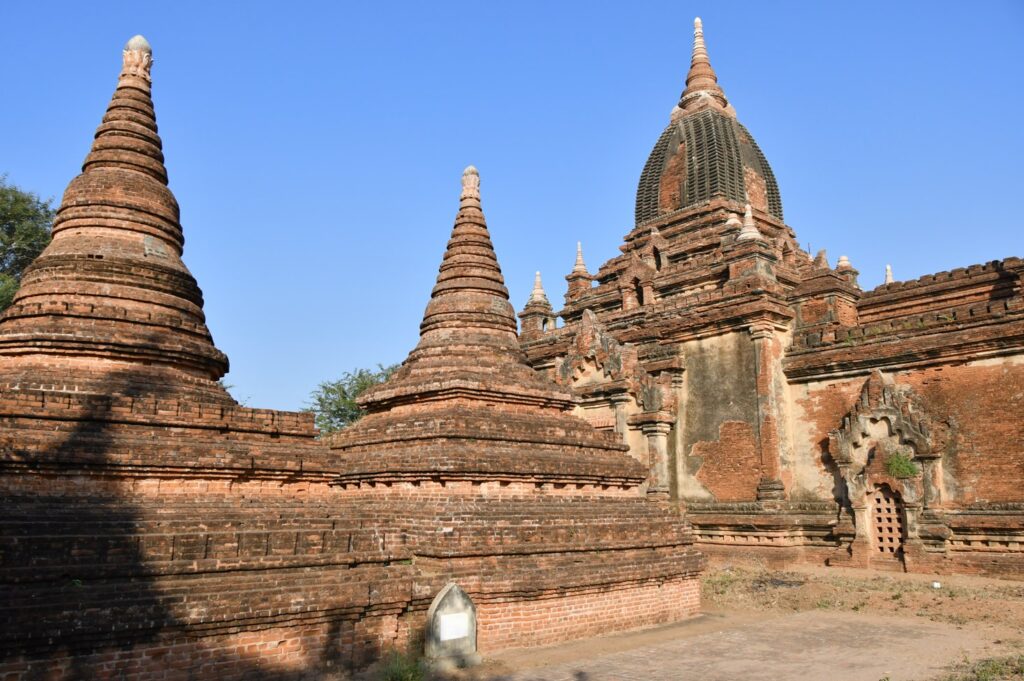
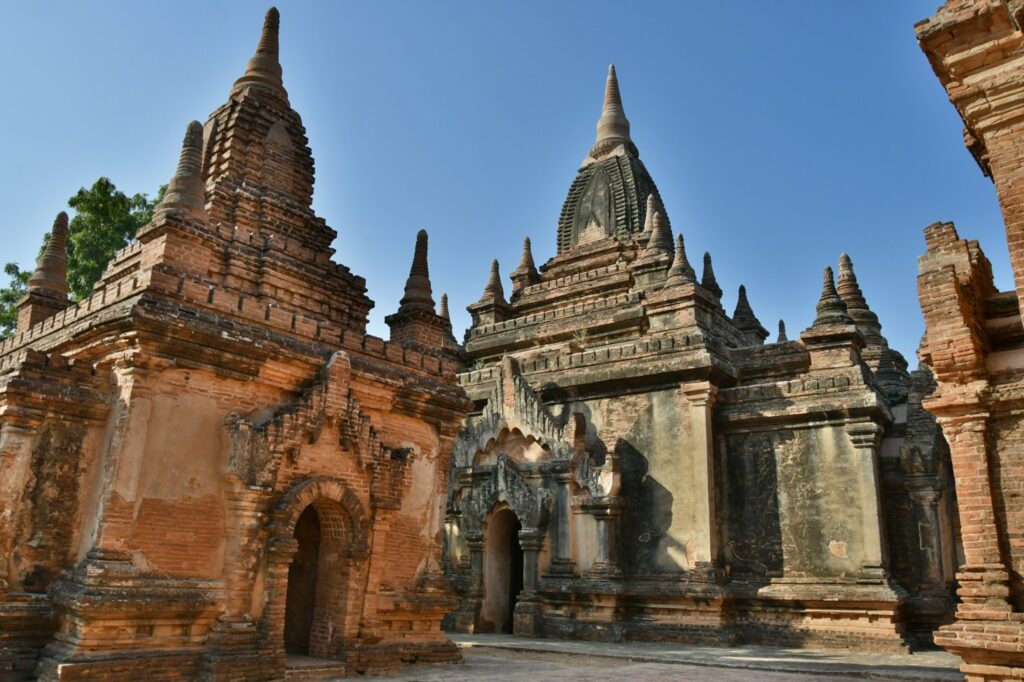
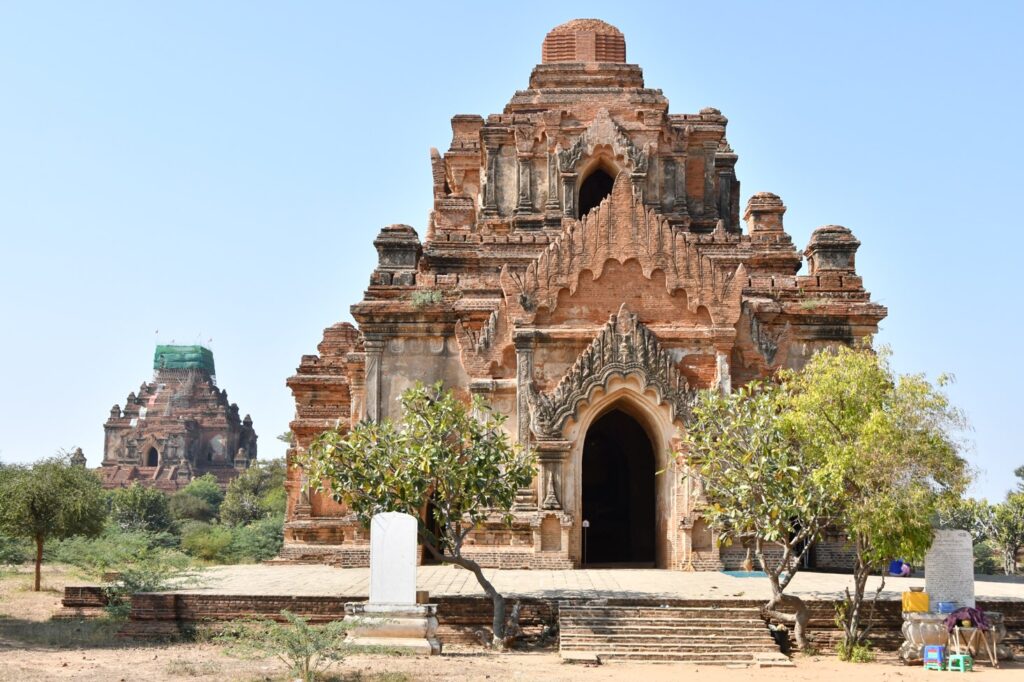
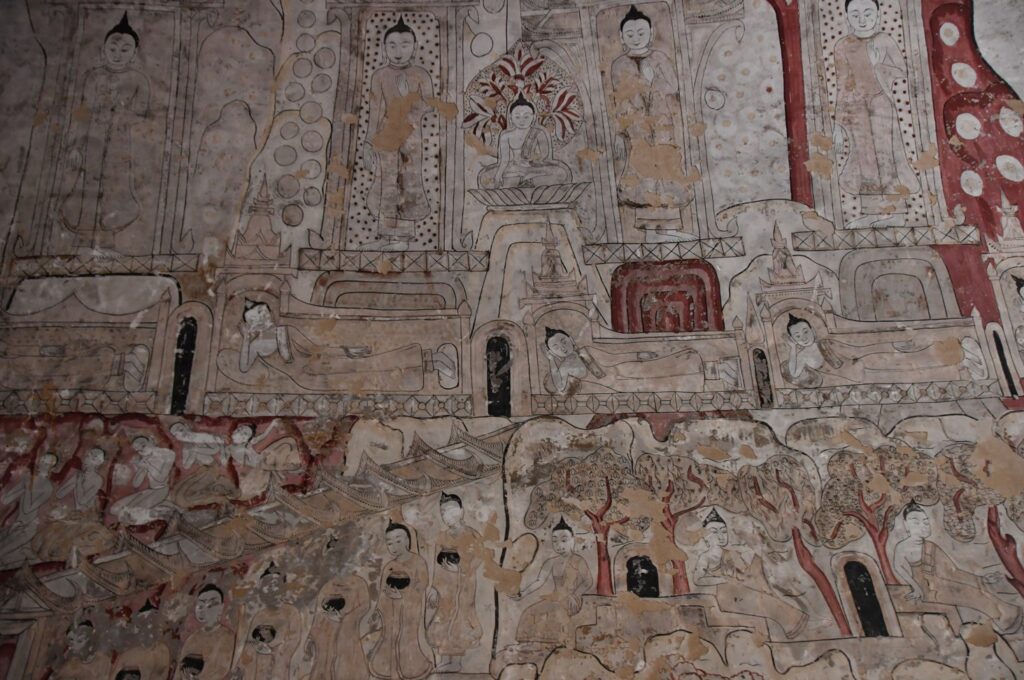
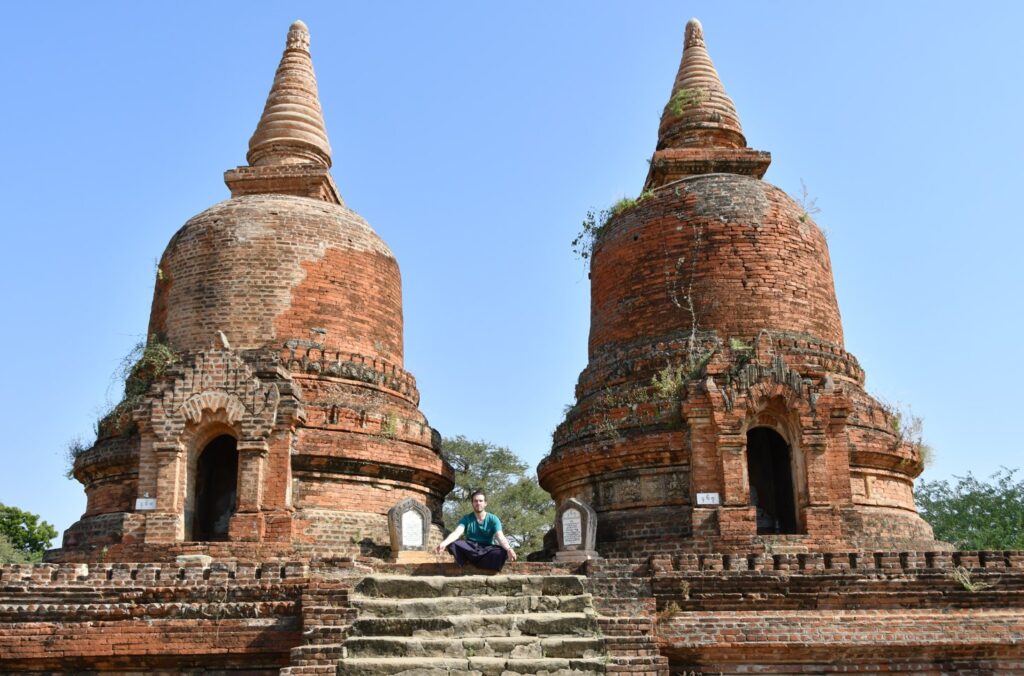
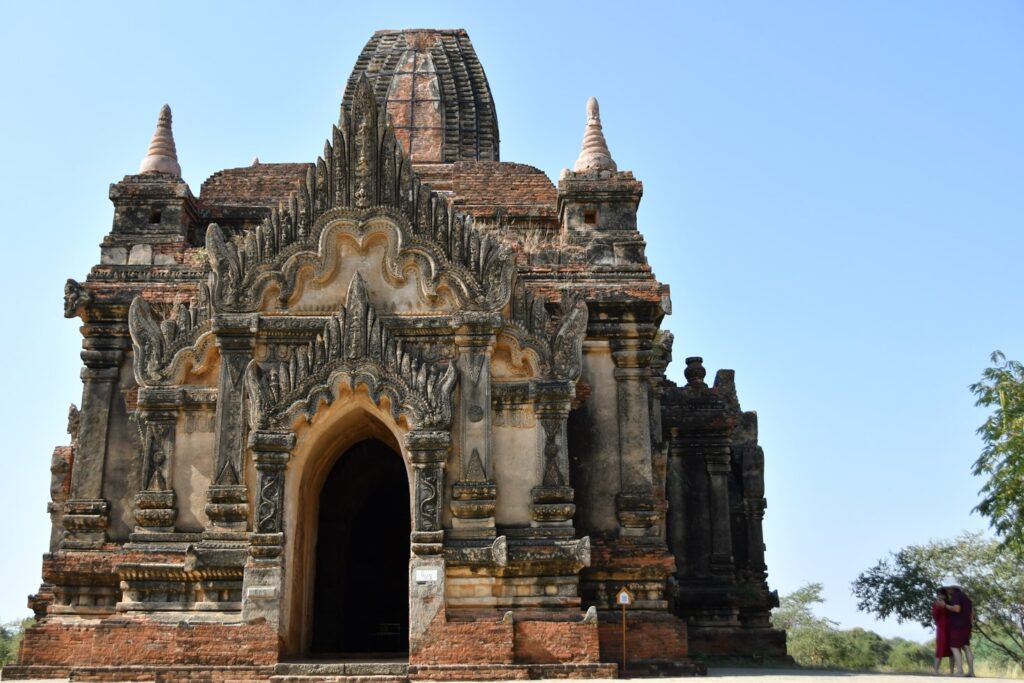
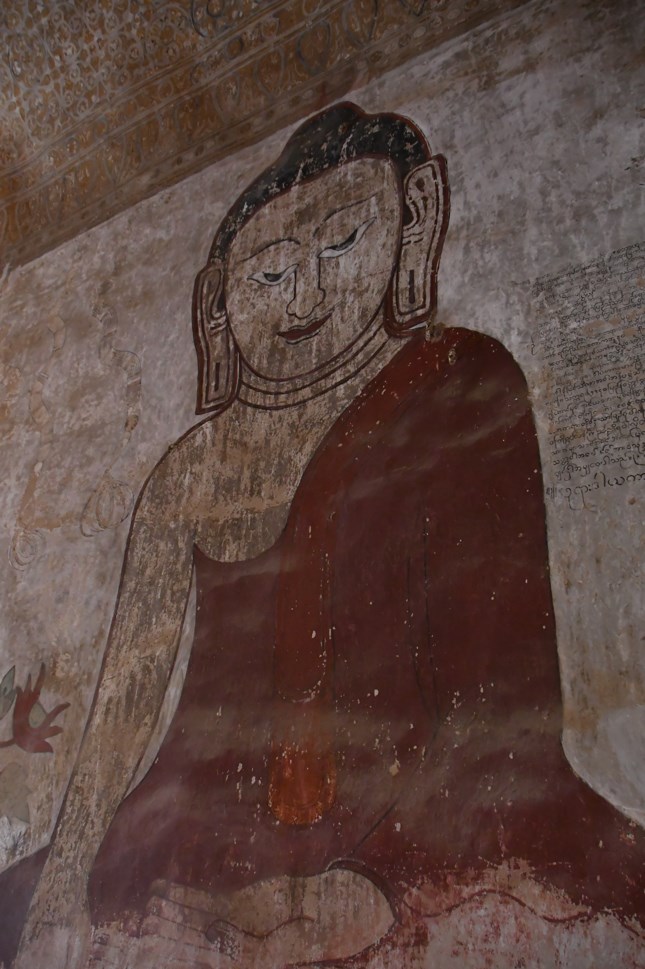
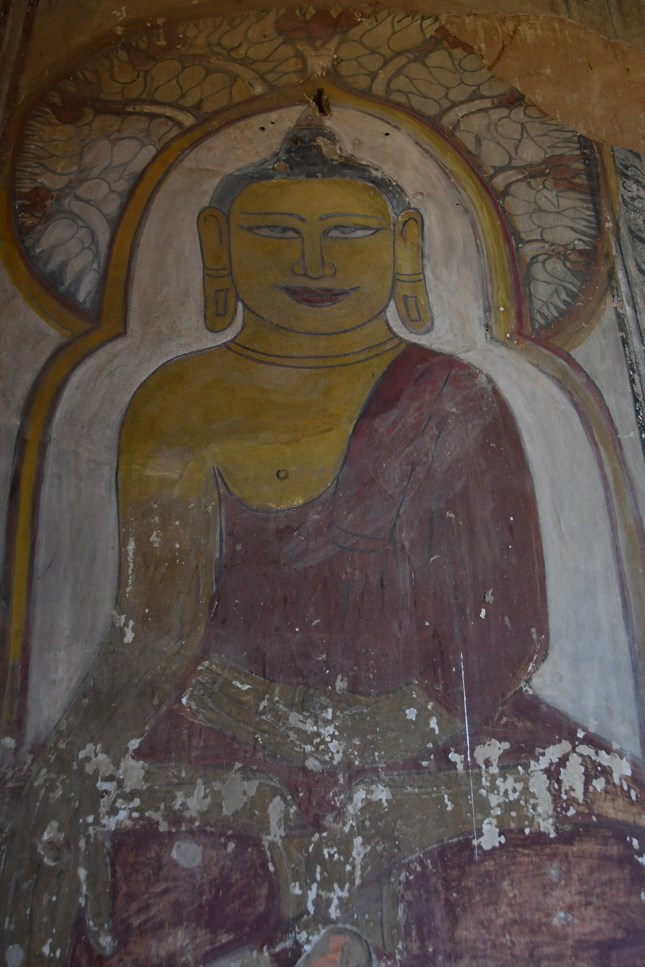
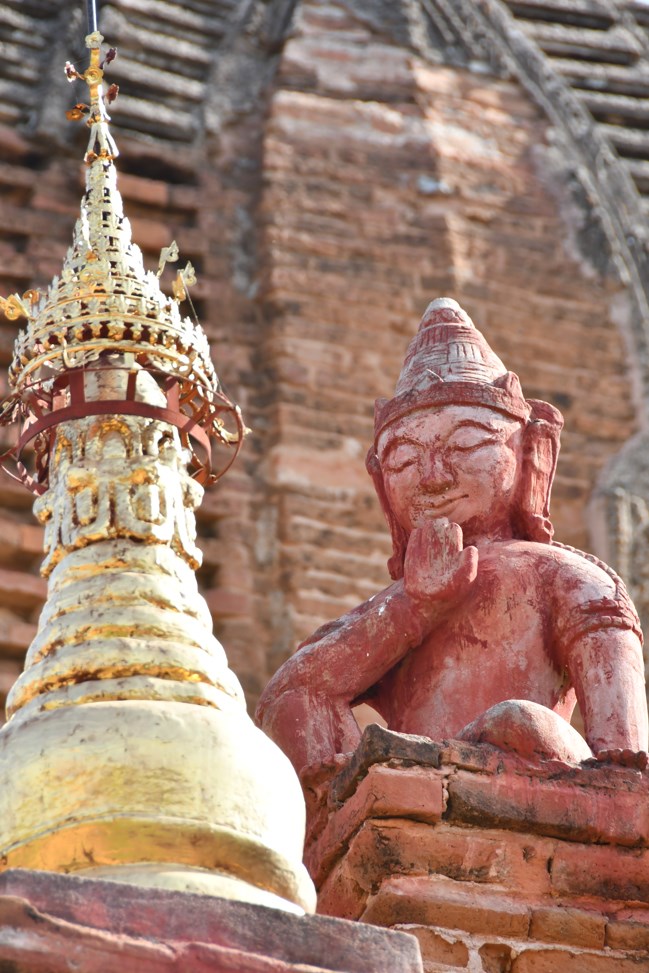
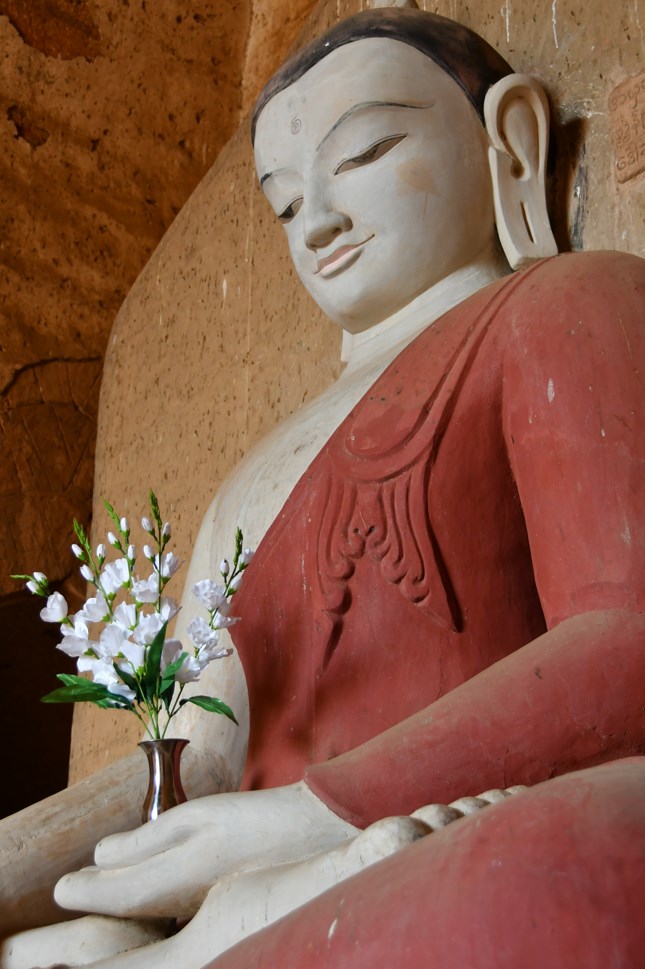
Day 6: We wake up early to witness the sunrise over Bagan from a hot air balloon, a Christmas gift for François. Unfortunately, rain prevented us from taking off at the last moment… After a few more hours of sleep, we’re in the same state as the sky: gloomy! We take a tuk-tuk to visit the largest temples in Bagan. Without the scooter, we end up walking a lot.
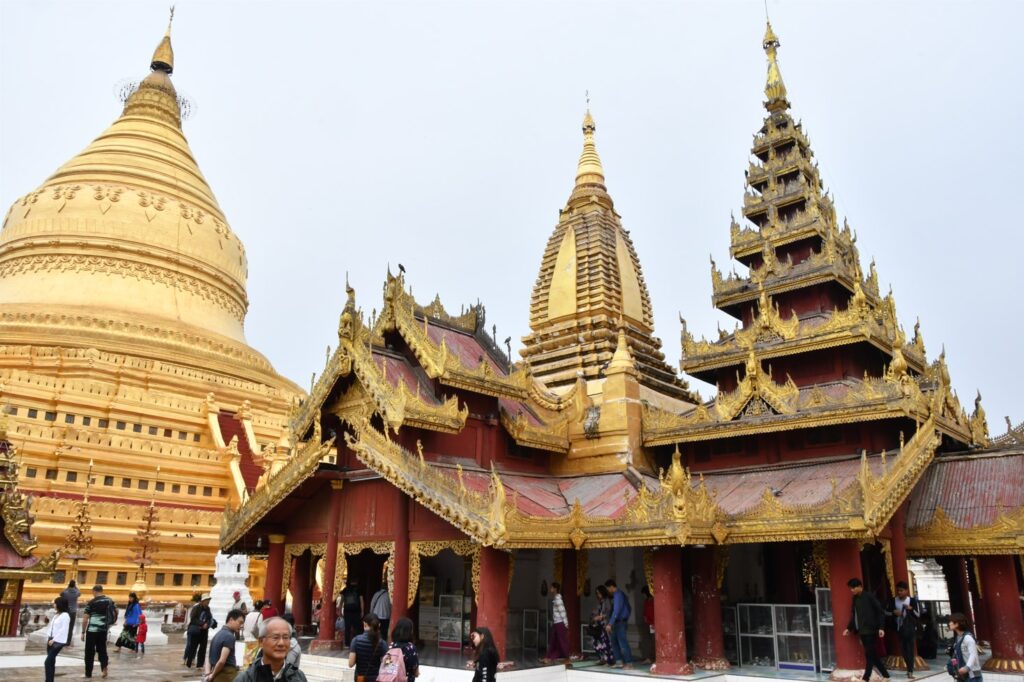
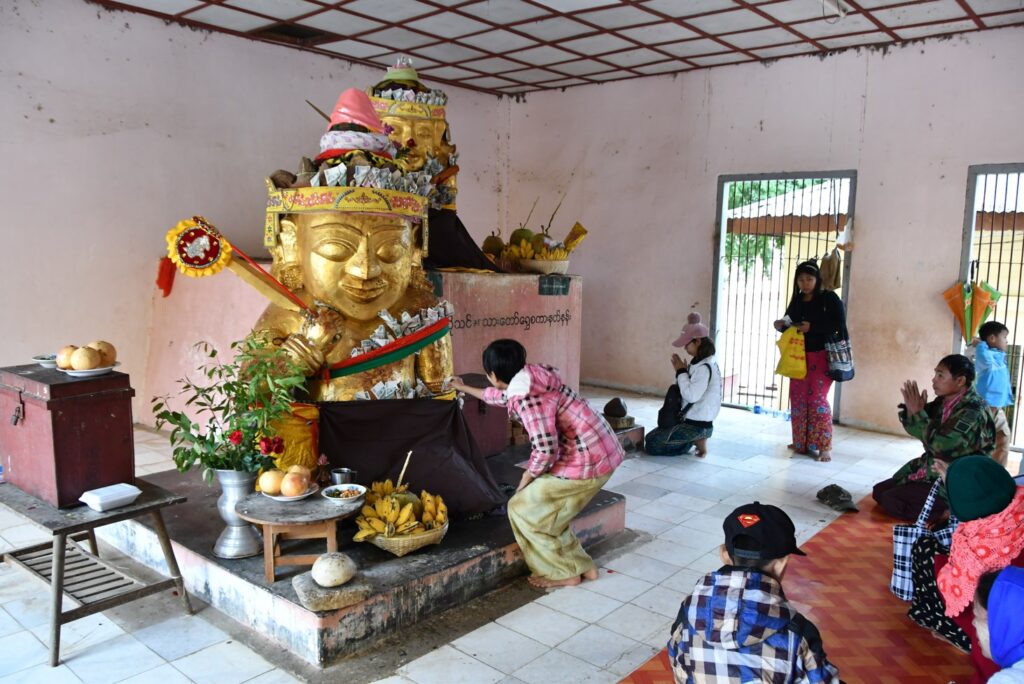
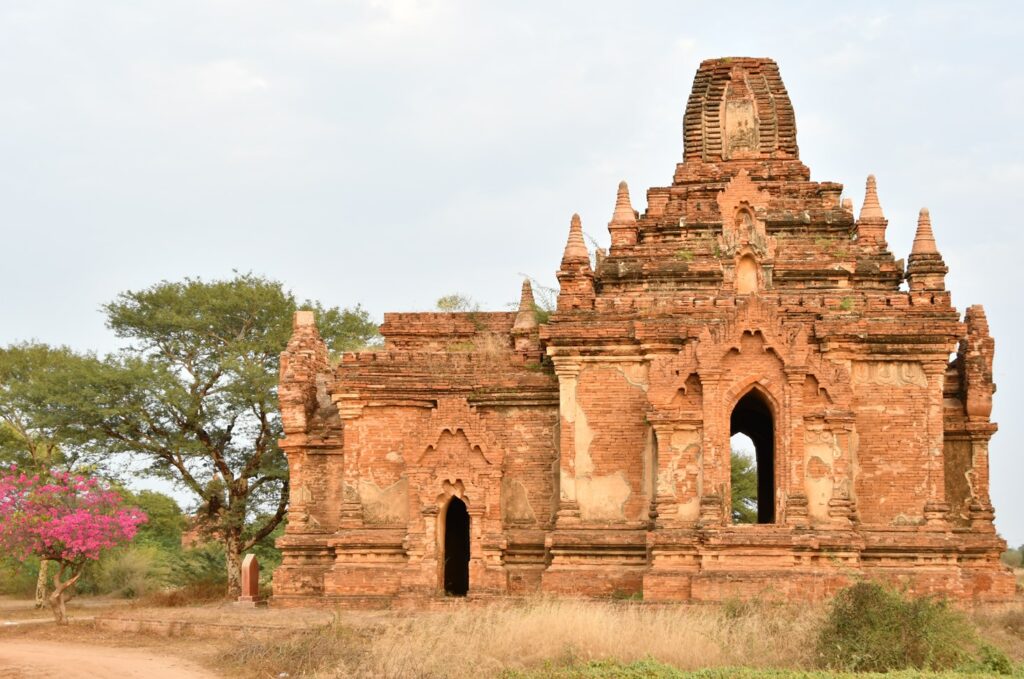
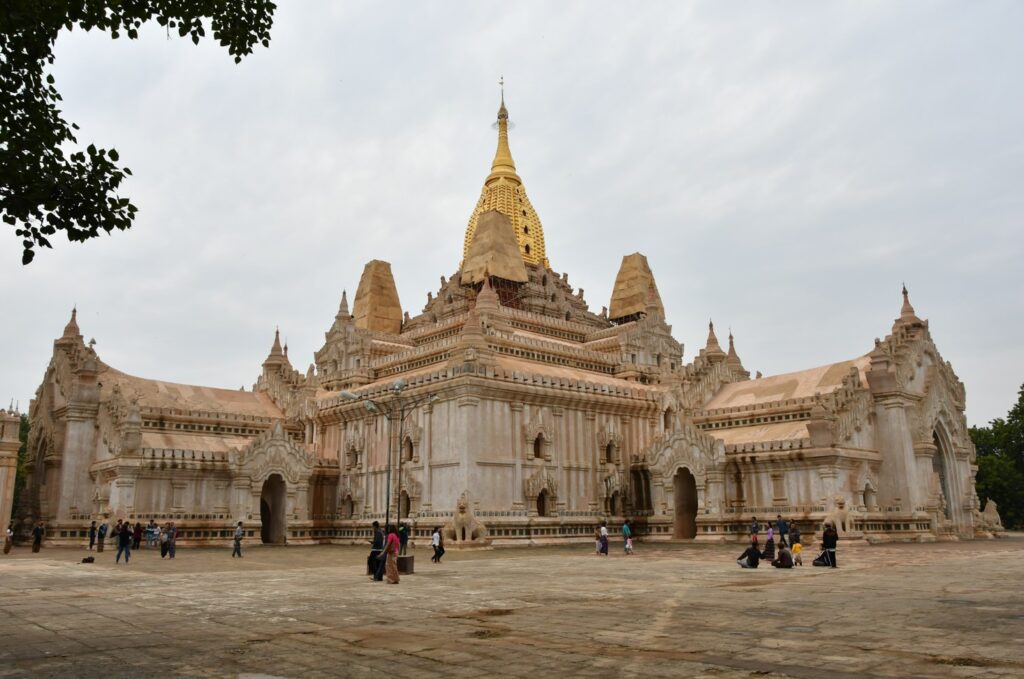


Day 7: Last day in Bagan. We’re getting close to temple and pagoda overload, especially considering that the monuments in Bagan are quite similar (the temples in Mandalay seemed more unique to us).

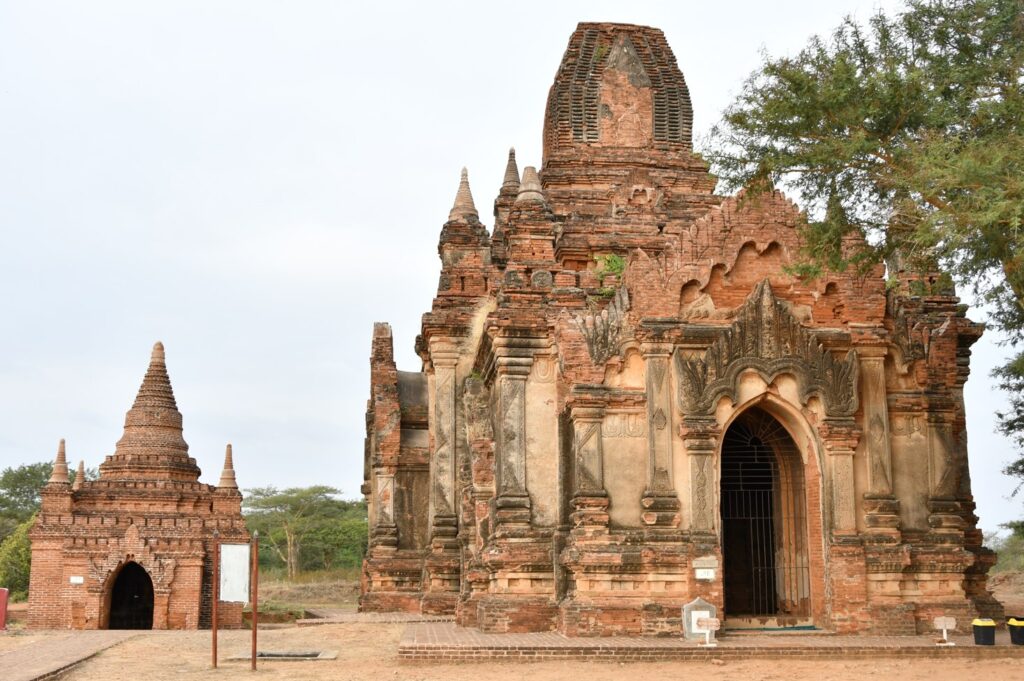
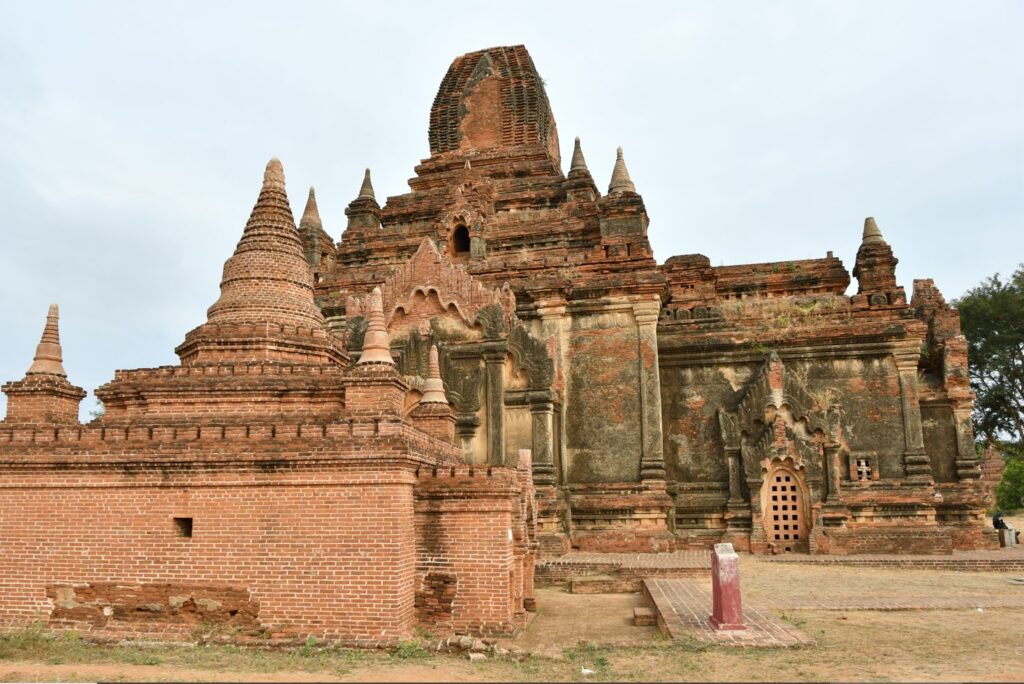

Towards the end of the day, disappointed for missing the Bagan sunrise, we reluctantly head up the observation tower. However, the spectacle isn’t unforgettable, and the tower is frankly unattractive.
Day 8: After a short flight, we arrive at Inle Lake – a radical change of scenery! We booked a hotel on stilts in the middle of the lake. We take advantage of the serenity of the place to rest after our adventures and misadventures in Bagan.
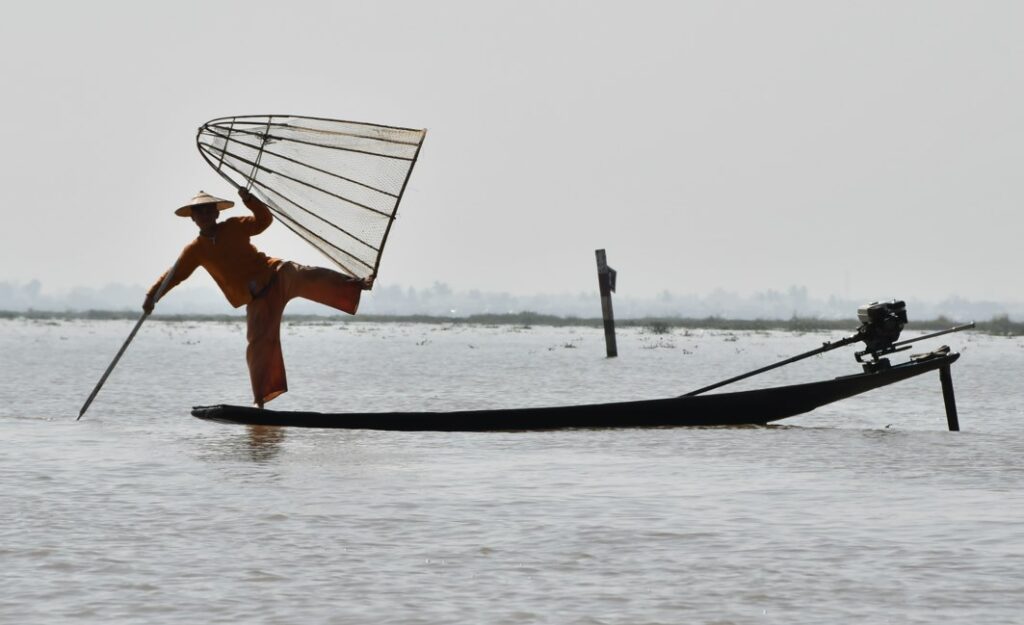
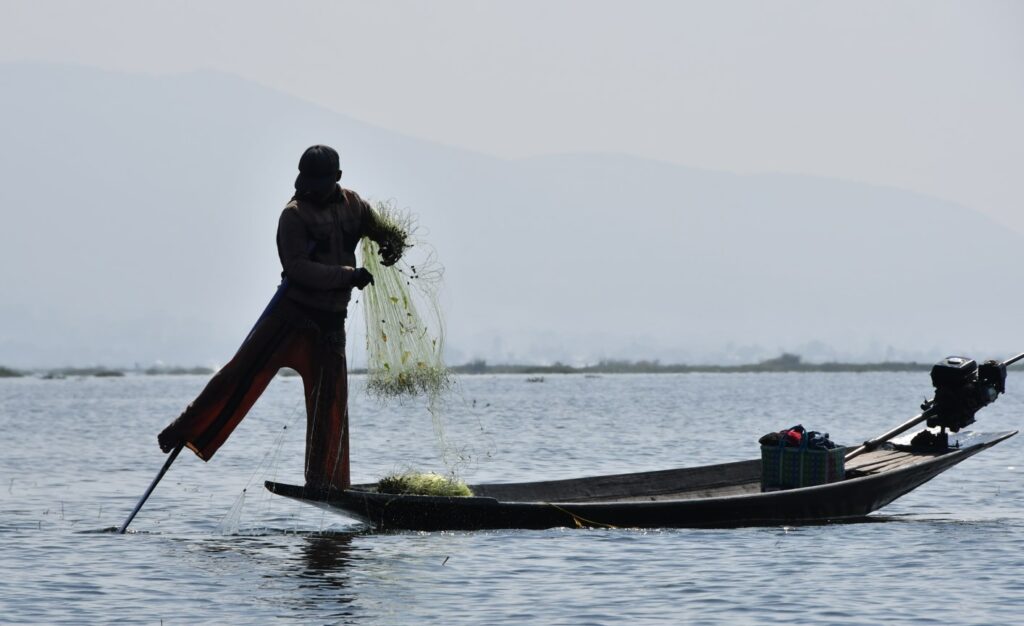
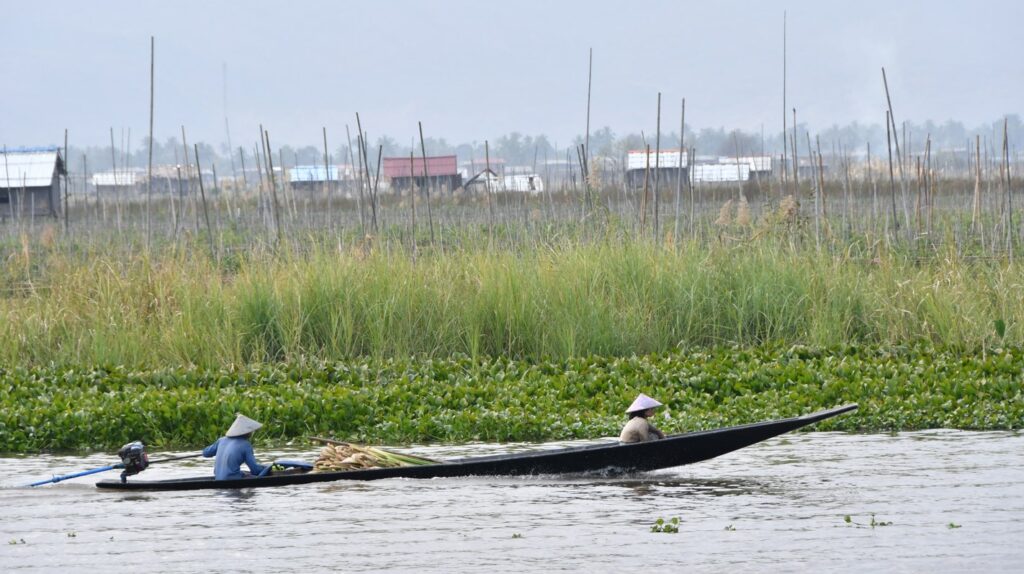
Day 9: Through our hotel, we booked a day on a longboat. The tours are all organized following a similar pattern, and aside from a few adjustments, everyone follows almost the same route. When we were planning our trip, we were worried about this standardized aspect, but we loved our day. Most visits were interesting, and we never felt pressured to buy anything. On the agenda: a visit to a silversmith workshop.


Visit to the incredible market at Inle Lake.
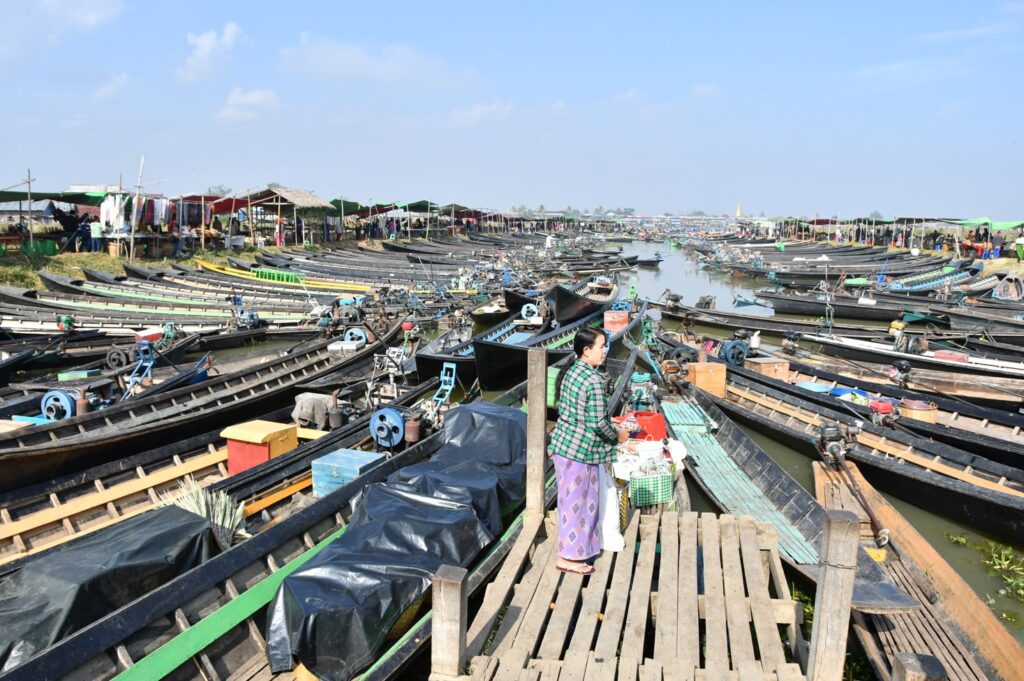
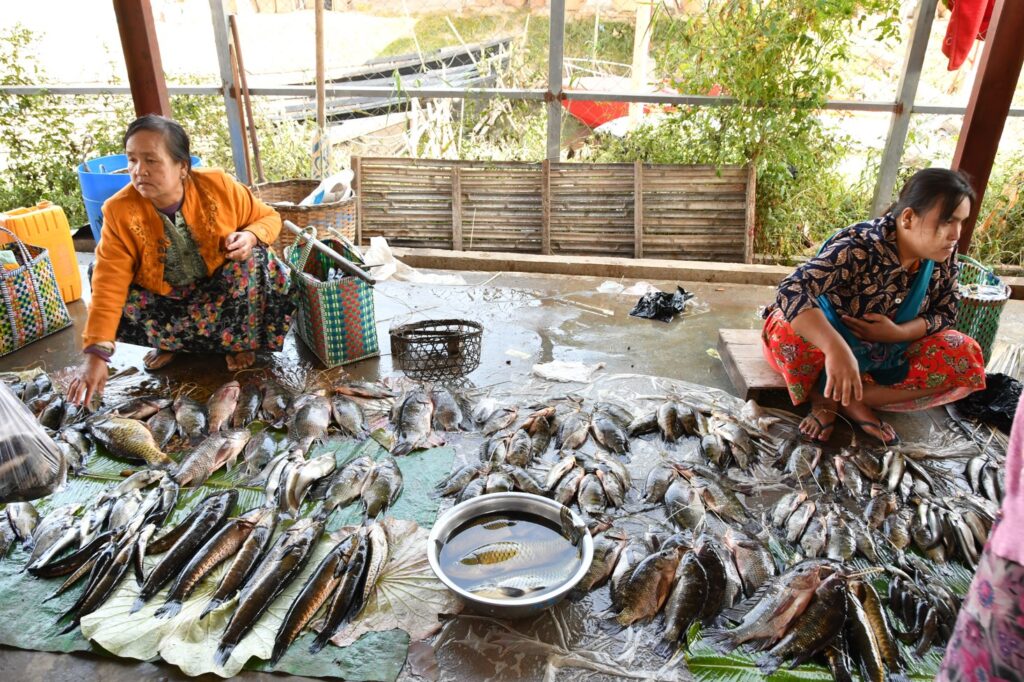
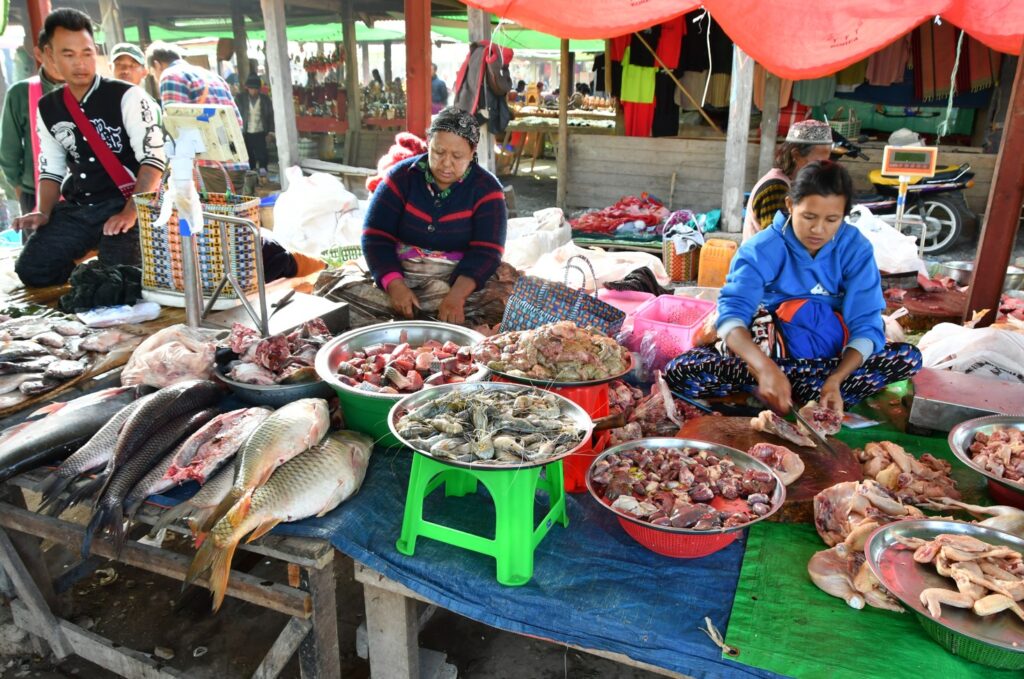
Silk workshop. Burmese cat shelter. Blacksmith workshop. Pagoda-making workshop and cigar workshop. Phaung Daw U Pagoda and its Buddhas buried under gold. Paper-making workshop.

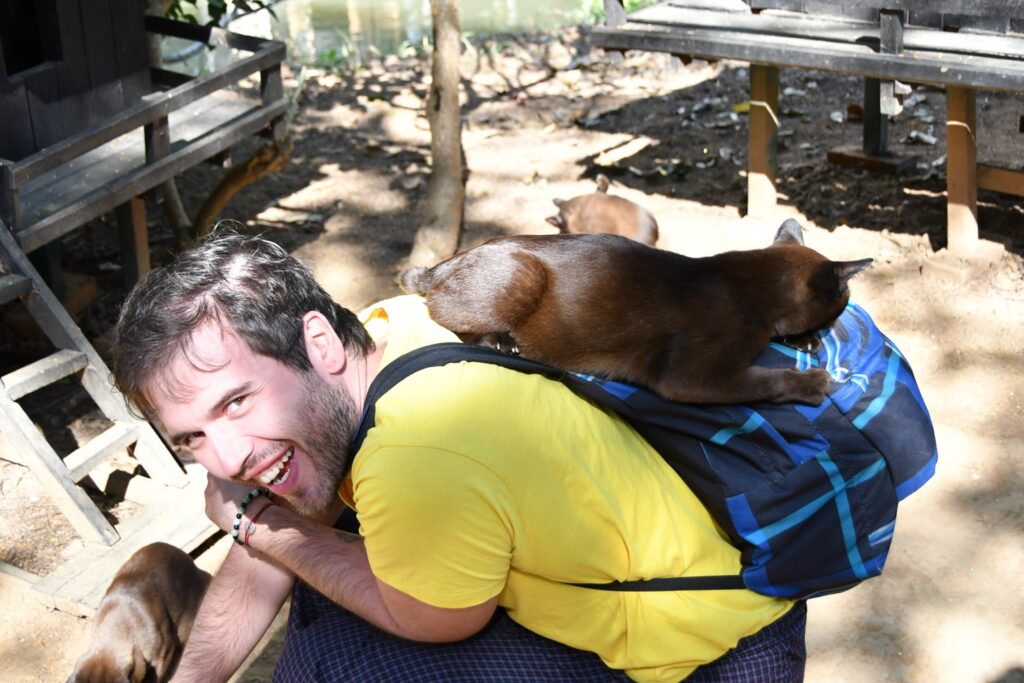
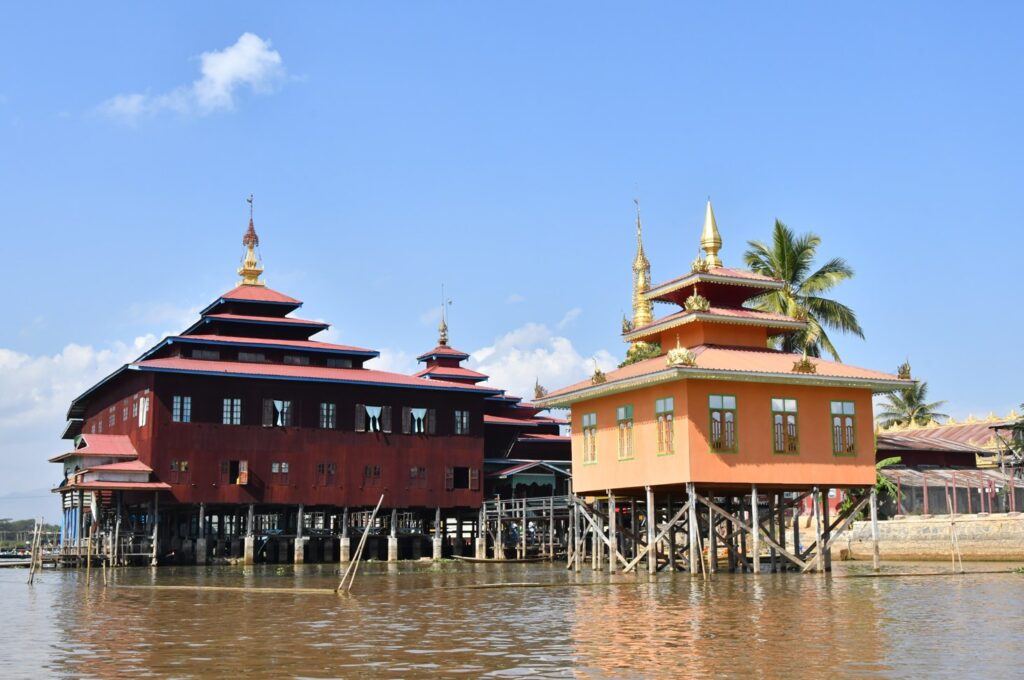
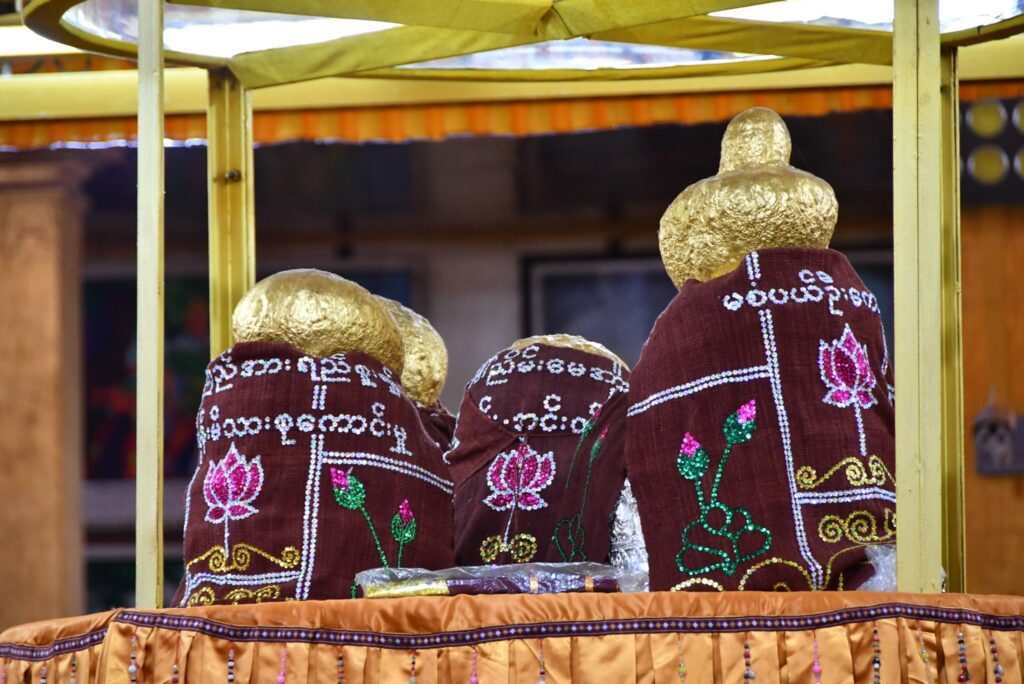
We then sail to In Dein and its hundreds of partially abandoned pagodas. The place is not heavily frequented and is stunning.
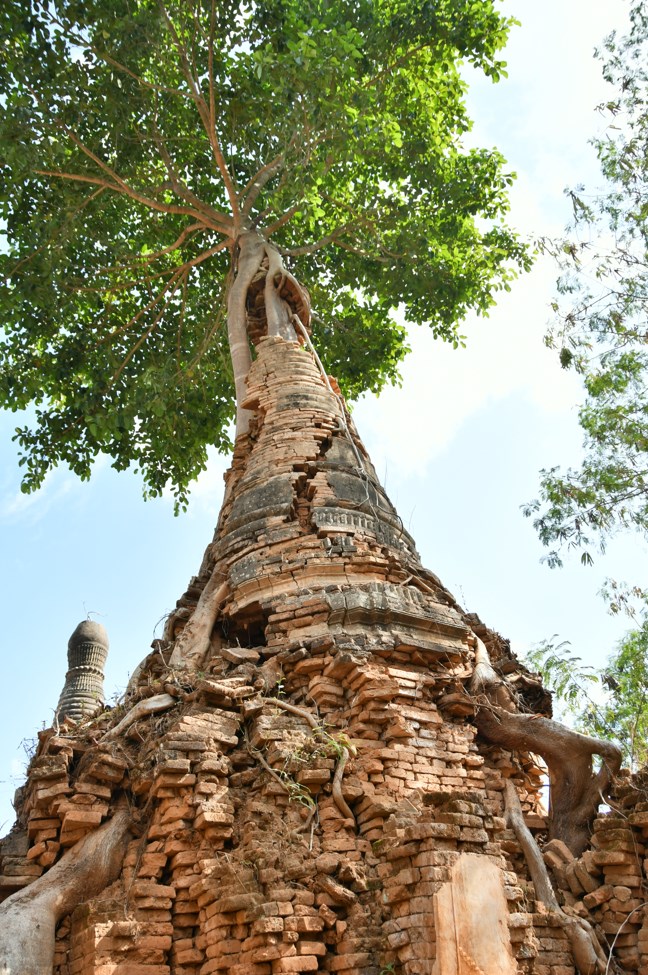
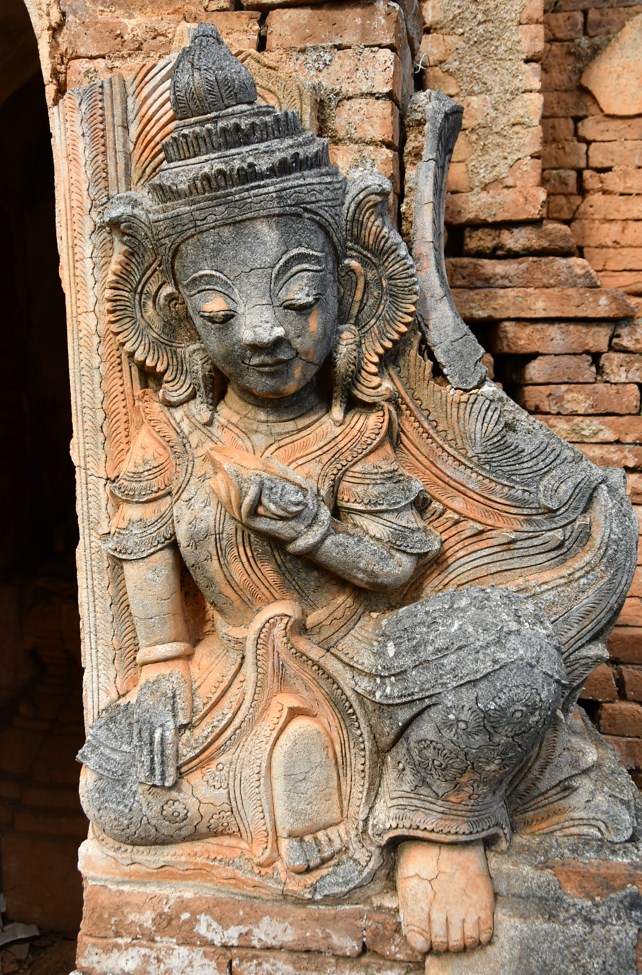
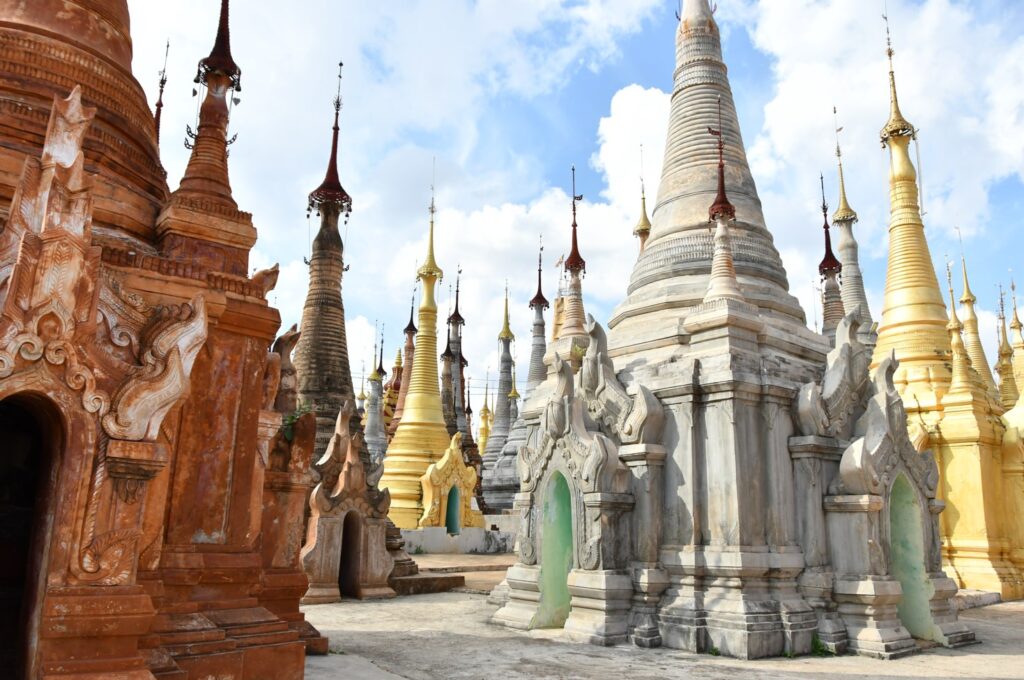
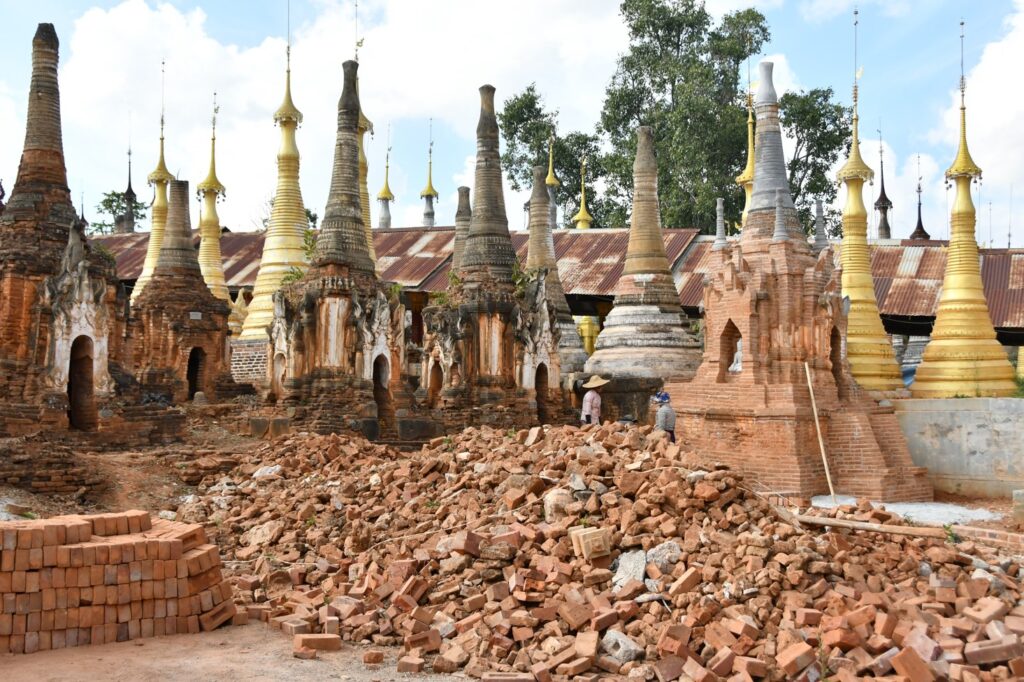
We end the day at the Nga Phe Chaung monastery and admire one last time the stilt villages and cultures.

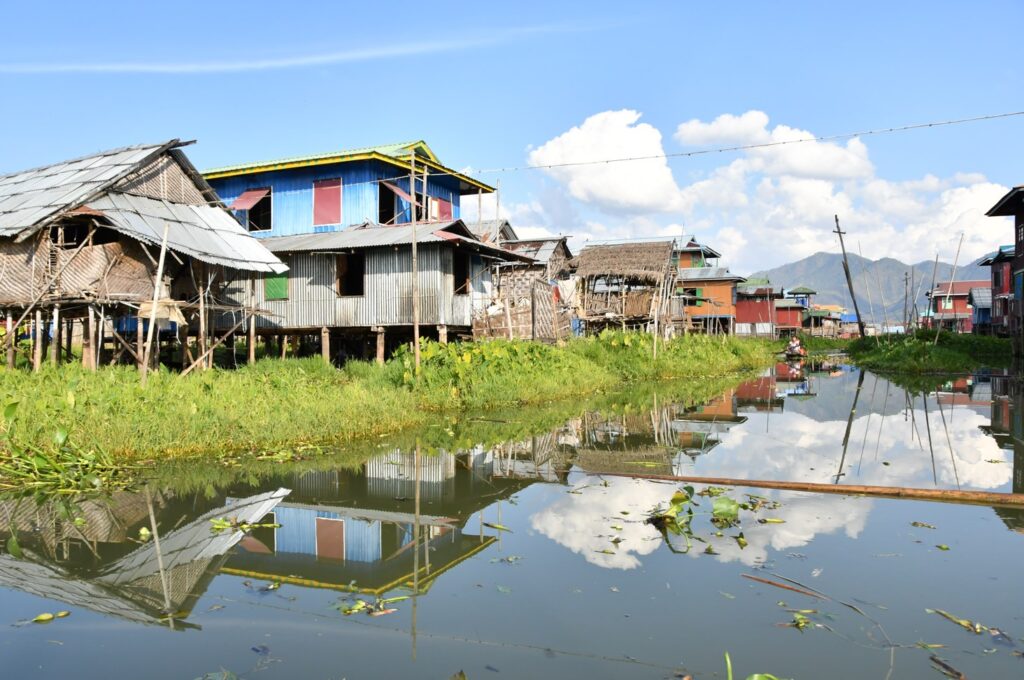
Day 10: It’s already time to leave Inle Lake. We arrive in the humidity and heat of the capital, Yangon. We stroll through the streets of the city center, where vegetation is reclaiming the buildings.
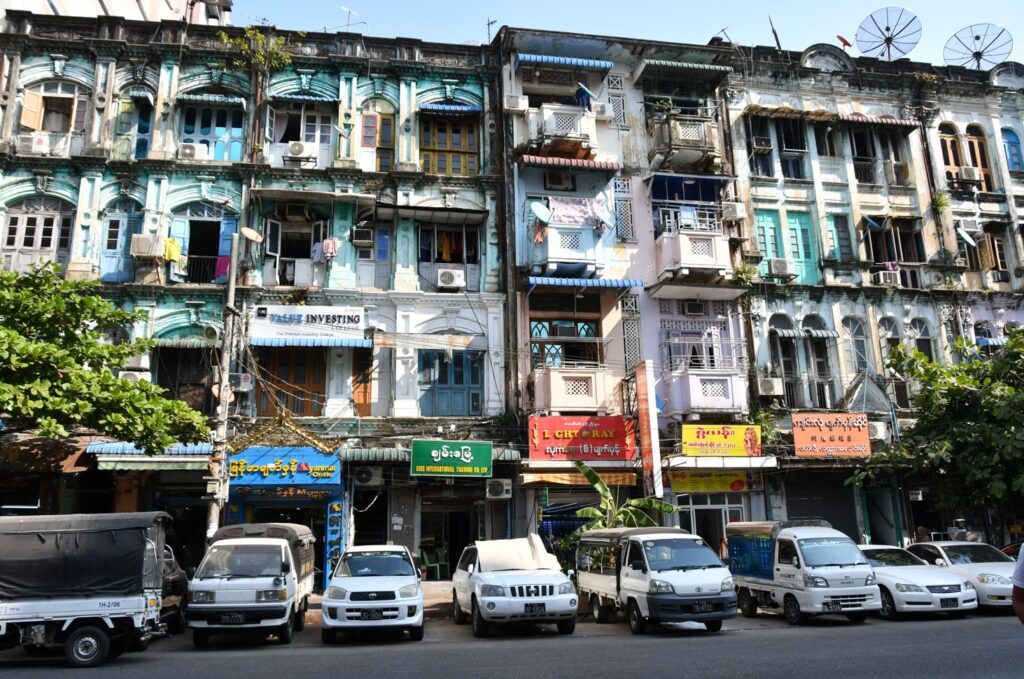
The contrast is striking with the immense (and golden) Shwedagon Pagoda.
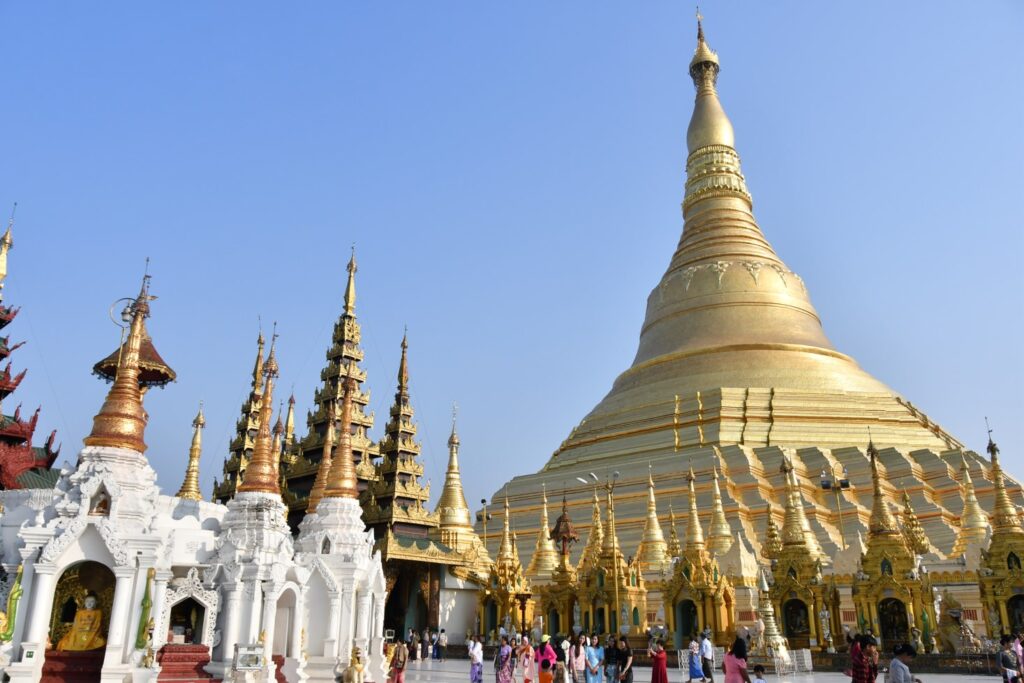
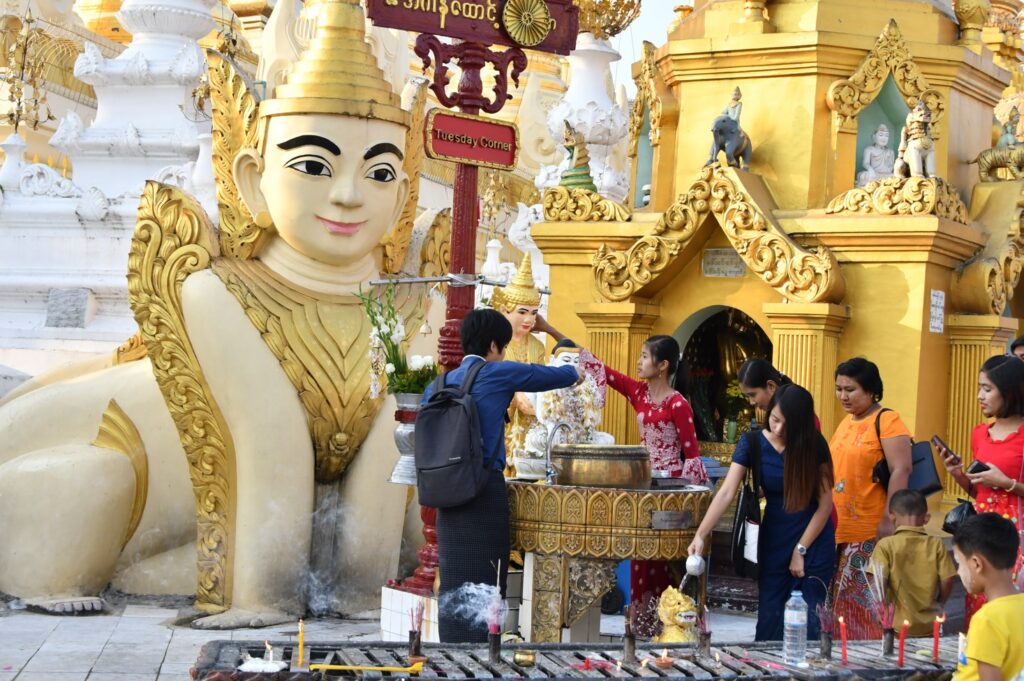
Day 11: It’s January 1st, but we didn’t really celebrate: we woke up at 3:30 am! We had a train to Bago at 5 am. The day before, when we bought our tickets, we learned that it was the only available train… Don’t expect high-speed rail: the 90-kilometer journey takes 2.5 hours. But the price is unbeatable: €0.70 for a first-class ticket!
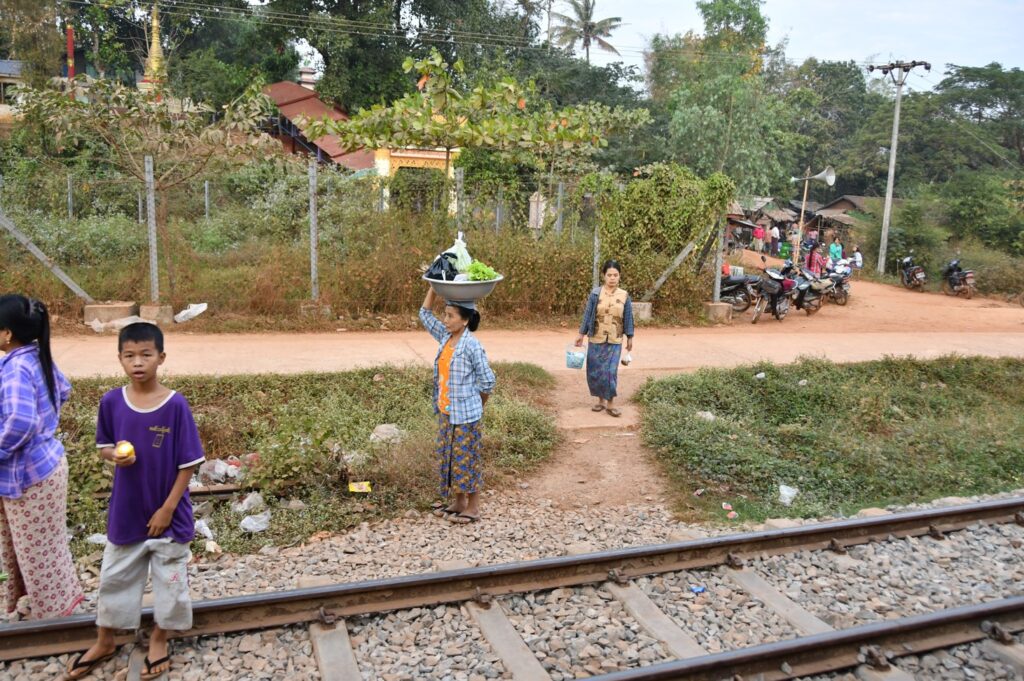
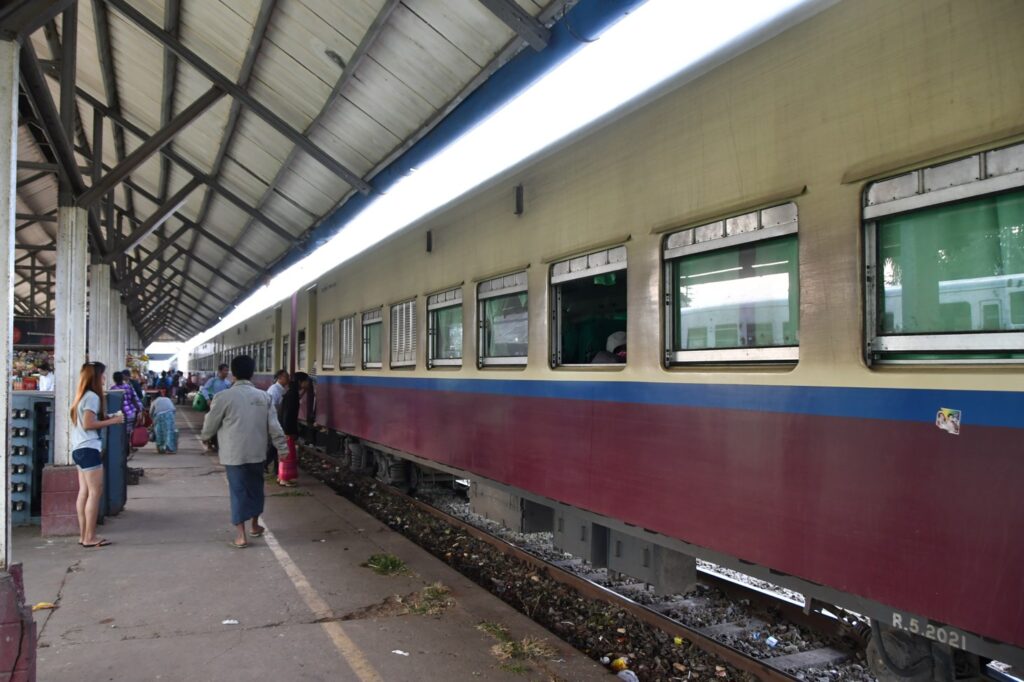
Once in Bago, we rented bikes from our hotel and began sightseeing with the Mahazedi Pagoda.
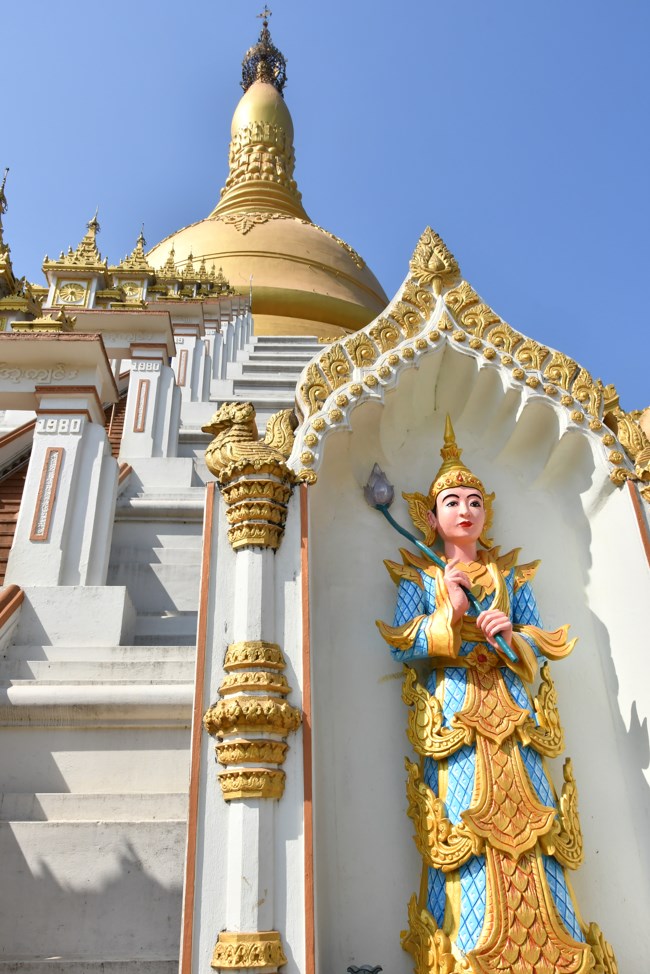
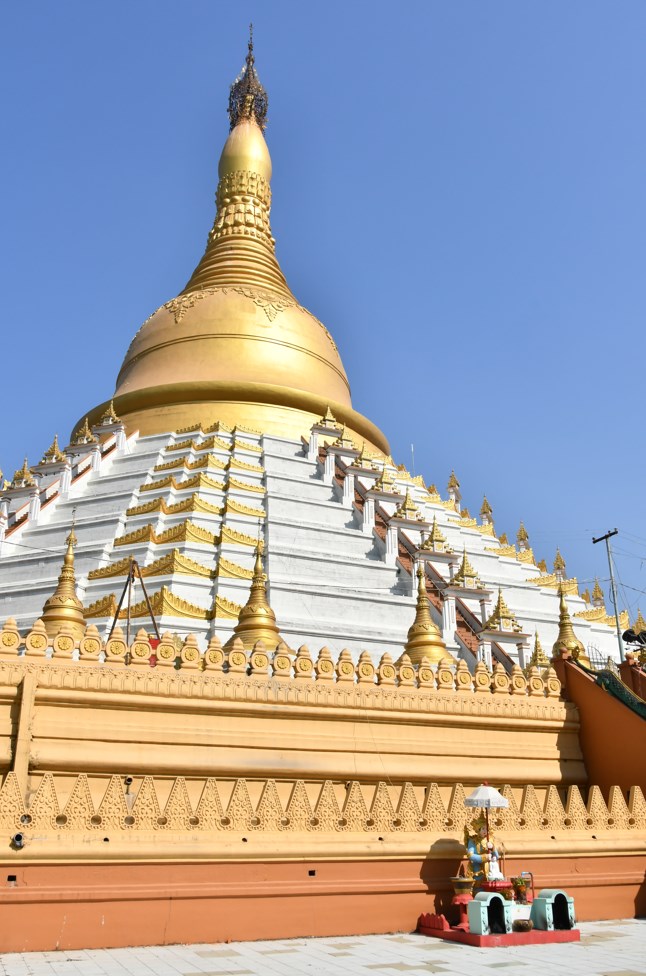
The reclining Buddha of Nya Thar Lyaung.
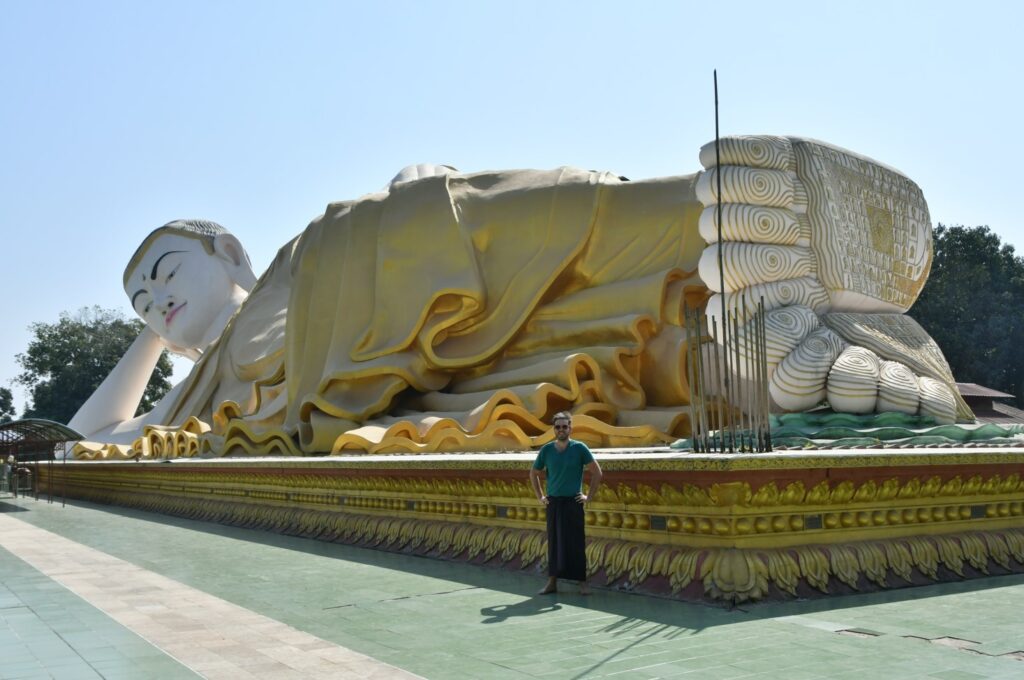
The reclining Buddha of Shwe Thar Lyaung.
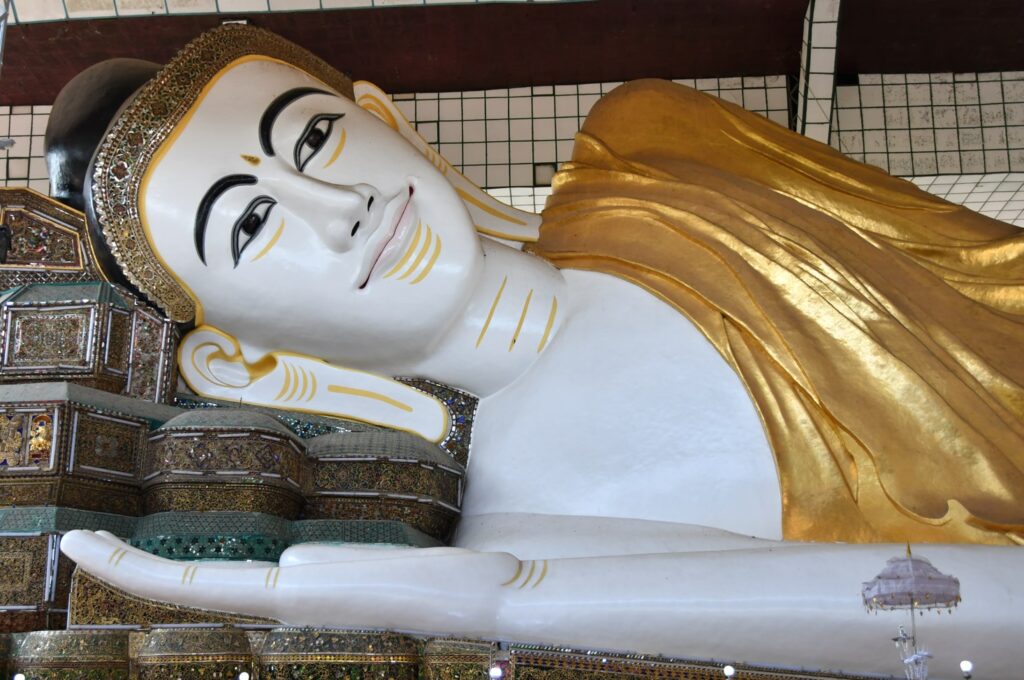
The Shwemawdaw Pagoda.
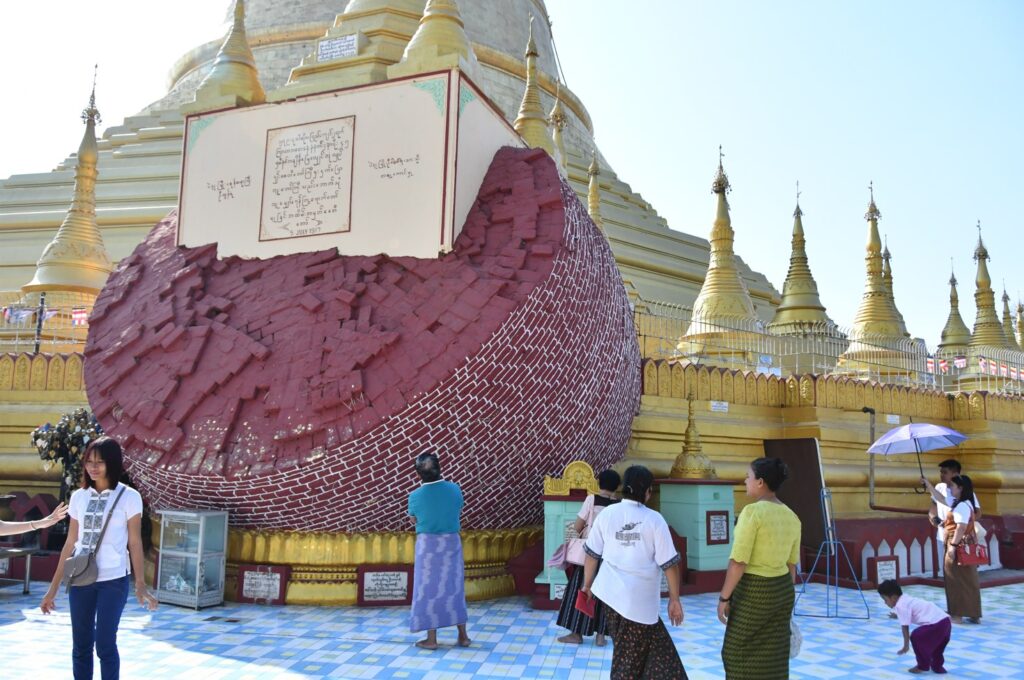
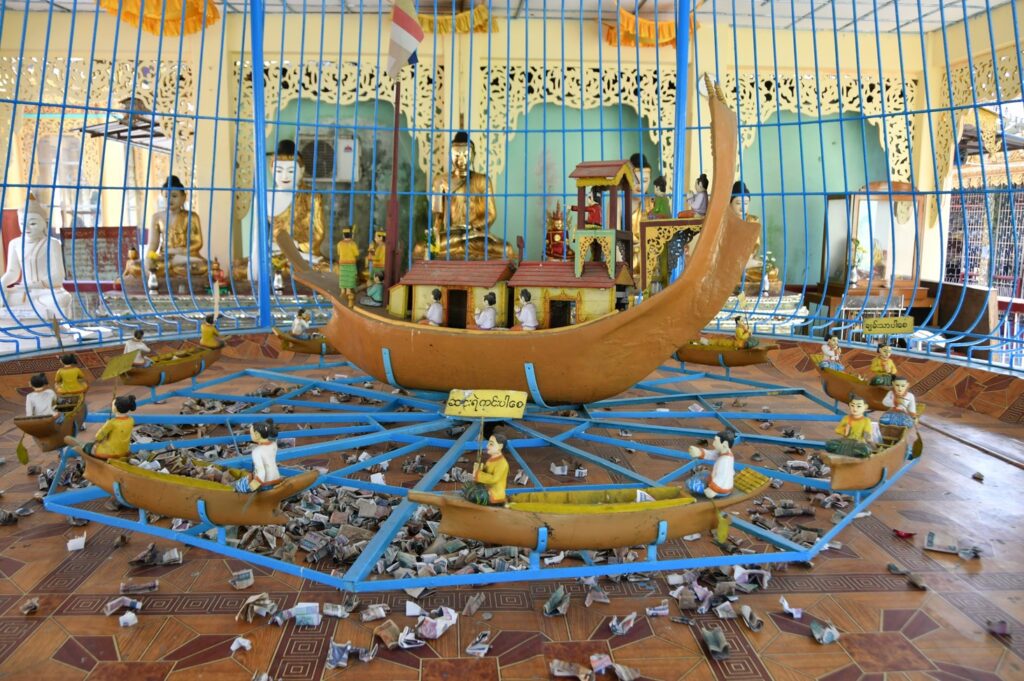
End of the day at the Kyaik Pun Pagoda with its four immense Buddhas.

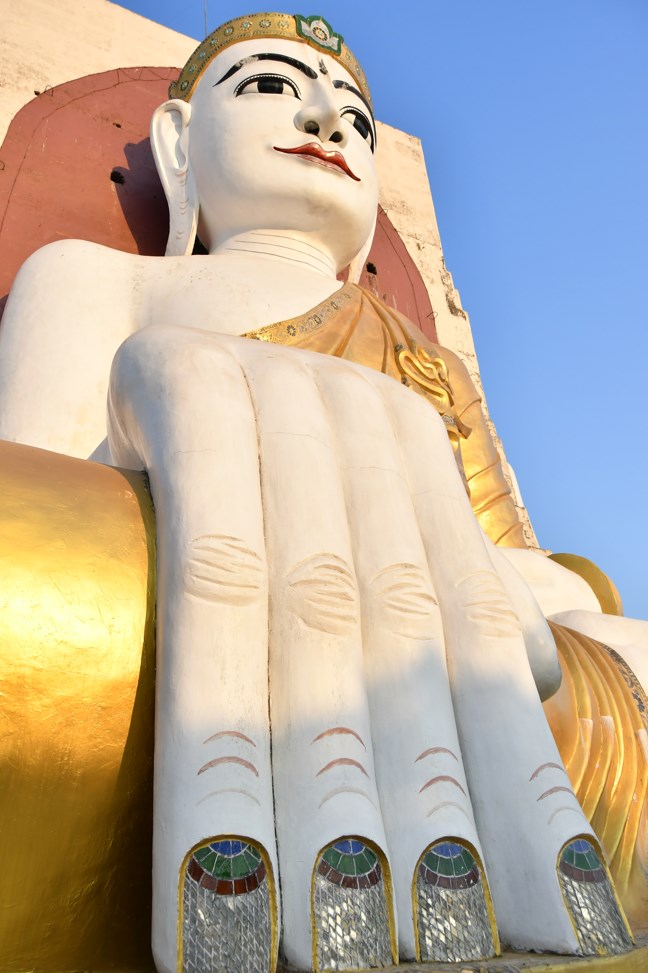
We really enjoyed the serene atmosphere of Bago. The sites were very beautiful and not crowded.
Day 12: We traveled by taxi to the base of the Golden Rock. We initially planned to take the bus, but an employee at the bus station misled us into thinking it was broken down, and we had to use a taxi. Yes, it was probably a scam, but we shared the ride with another naive tourist, and in the end, we paid the same as the bus fare for a faster journey.
The rest of the day was far more exhausting: Benjamin had read horror stories about the shuttle bus up to the Golden Rock, so we decided to hike. Twelve kilometers with an elevation gain of a kilometer, all under sweltering heat! We won’t be forgetting this day anytime soon…
Once at the top, we were captivated by the Golden Rock and the incredible devotion of the Burmese people. A genuine surprise and a real highlight we didn’t necessarily expect.
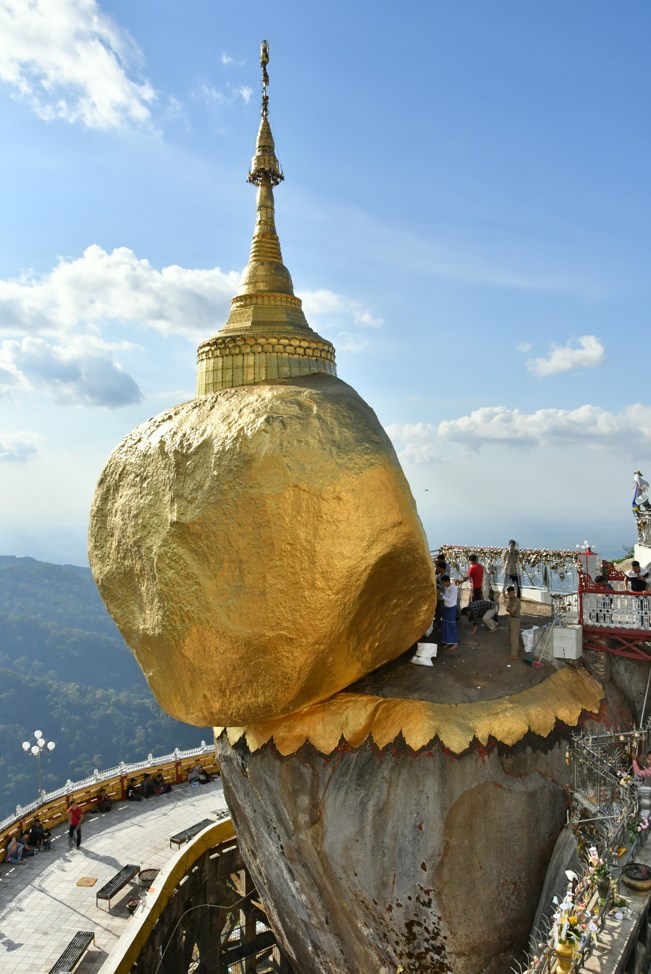
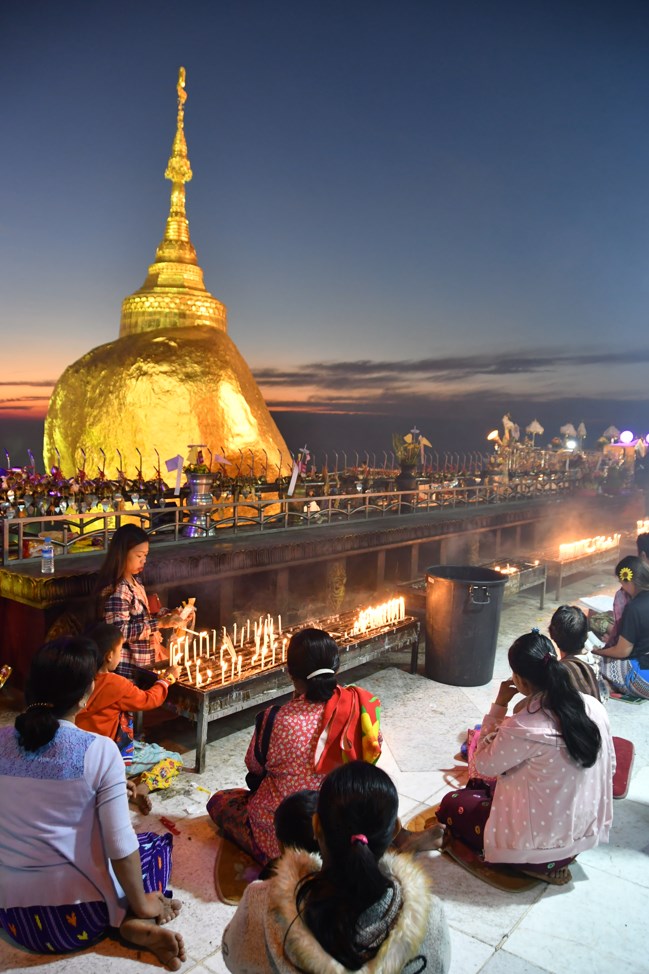
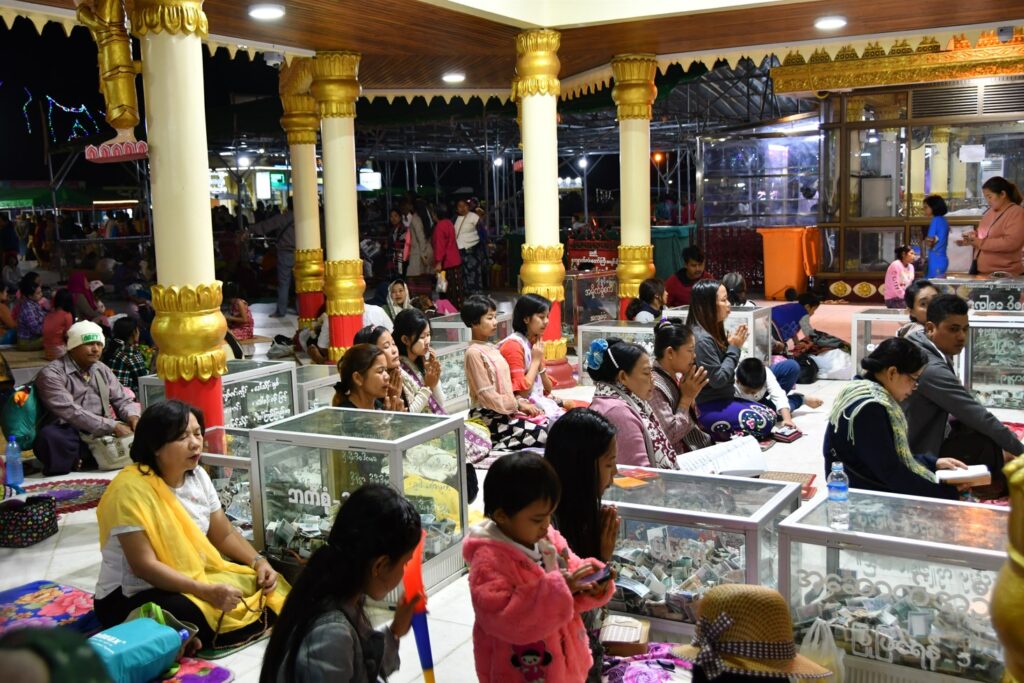
Day 13: We descend the 12 kilometers. The descent is less painful than the climb, especially since we leave early enough to avoid the afternoon heat. We take the bus to Yangon.
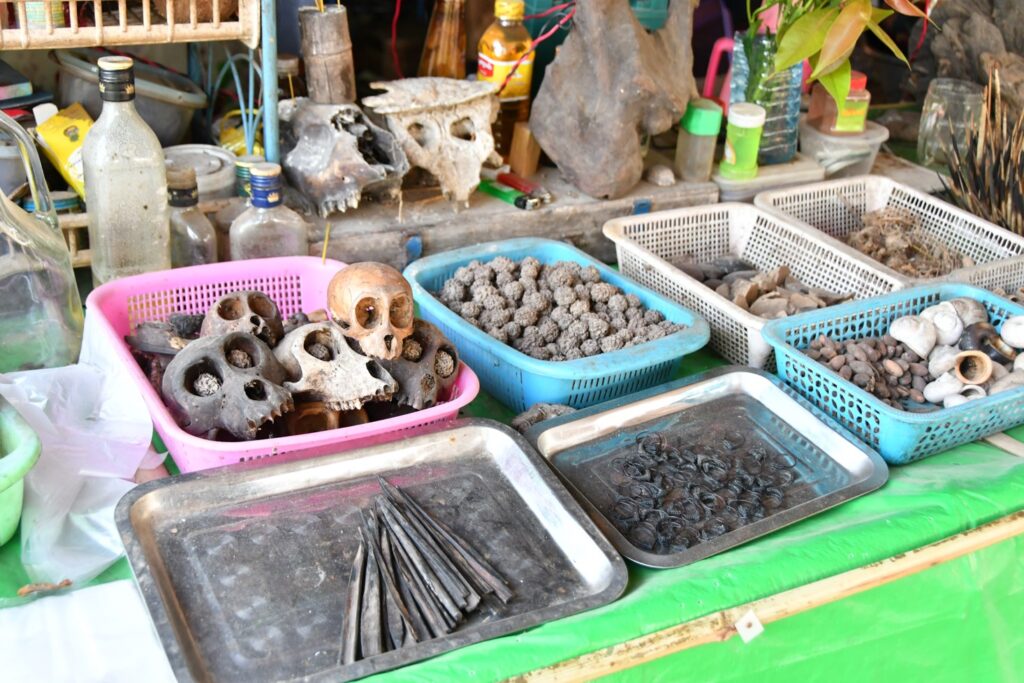
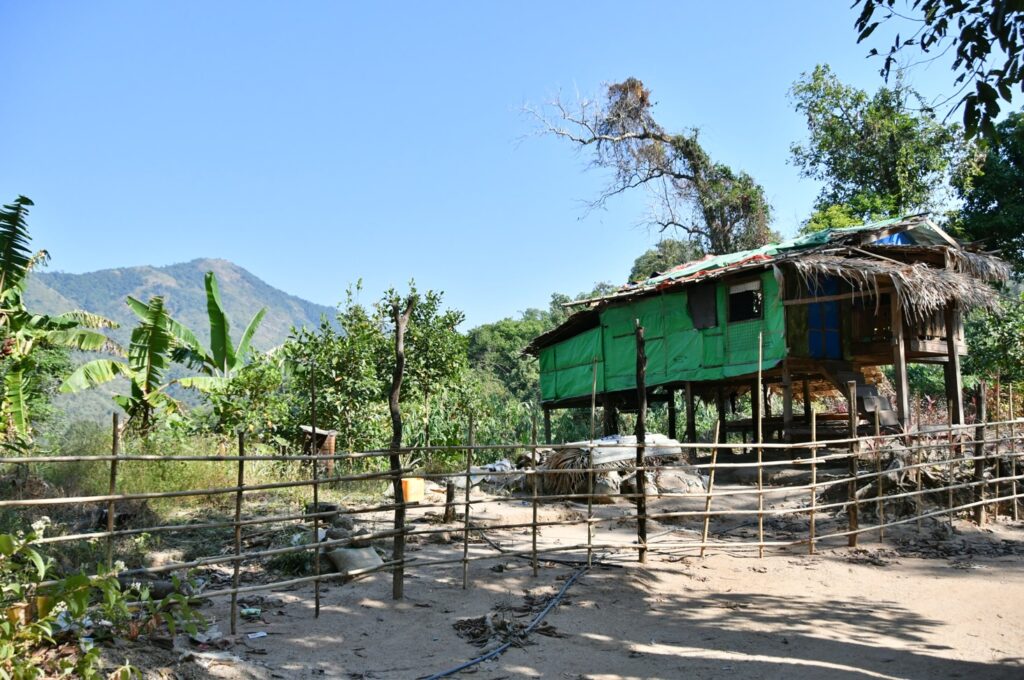

Day 14: For our last day in Myanmar, we do a few visits in Yangon. We start with the Chauk Htat Gyi Pagoda.
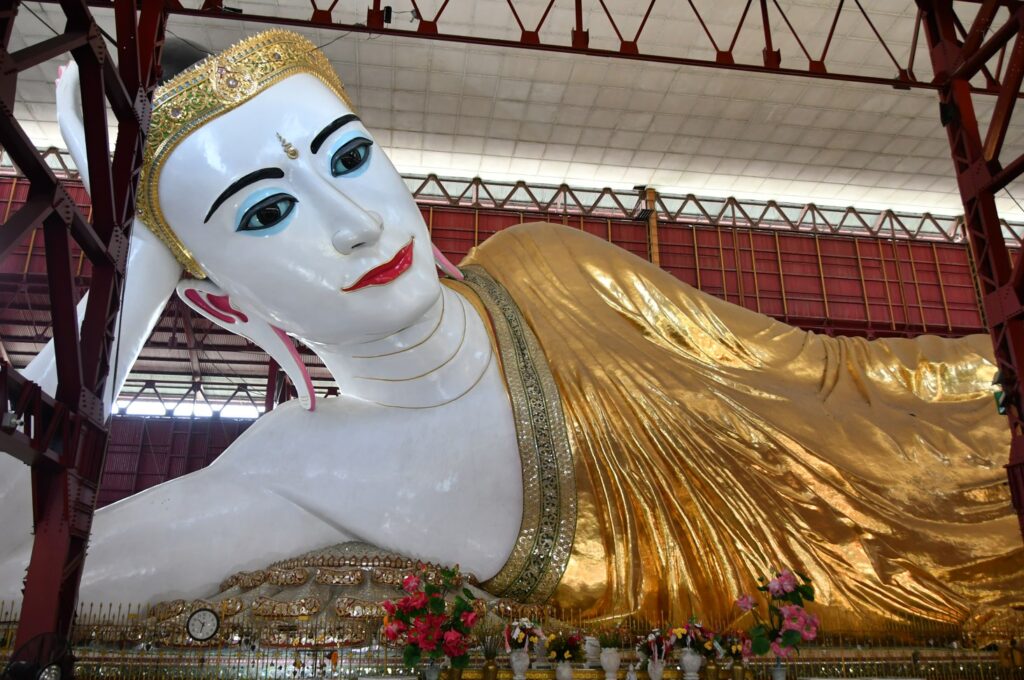
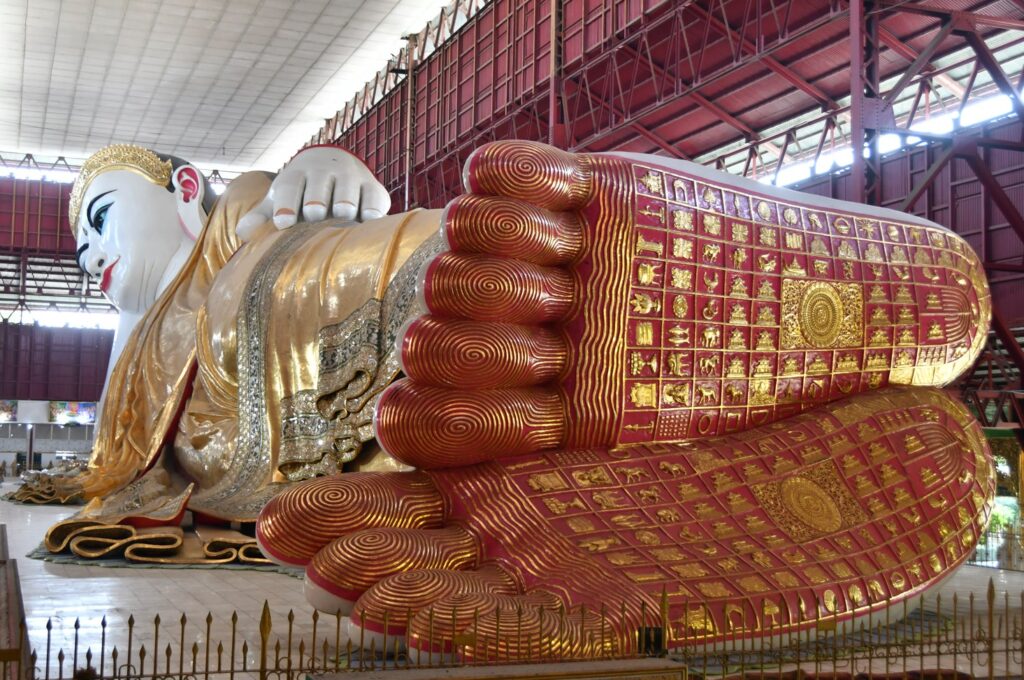
Then we go see from afar the Karaweik Hall, the boat-restaurant.
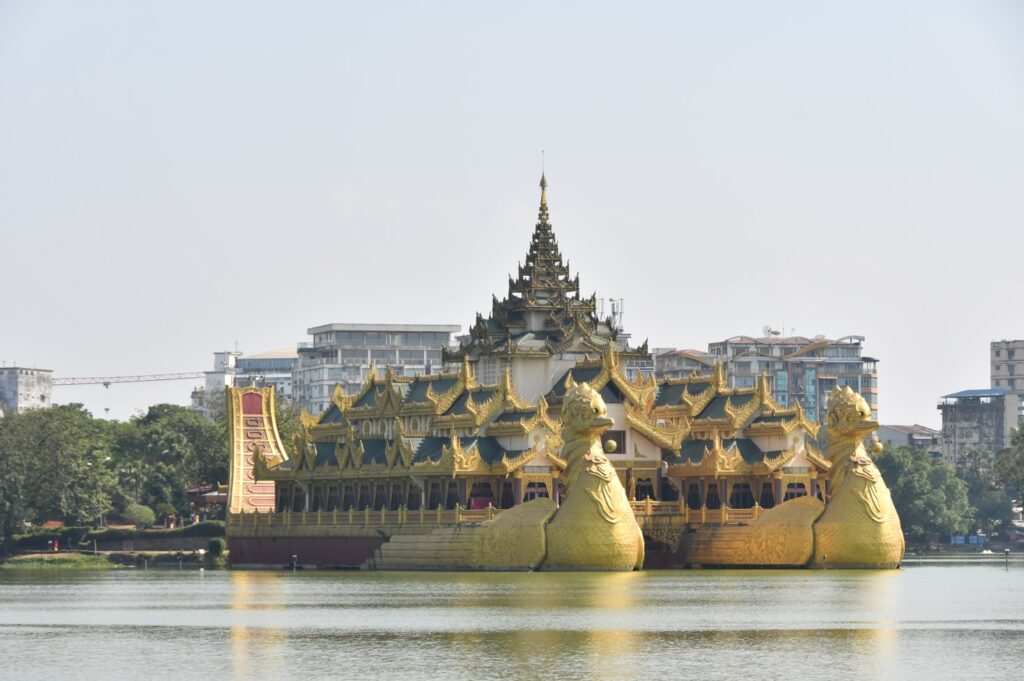
The evening, as we board the plane back to Paris, our minds are filled with Burmese smiles, thousands of pagodas, and an incredible sense of having been in an entirely different world.
Find all our other articles on Myanmar:


